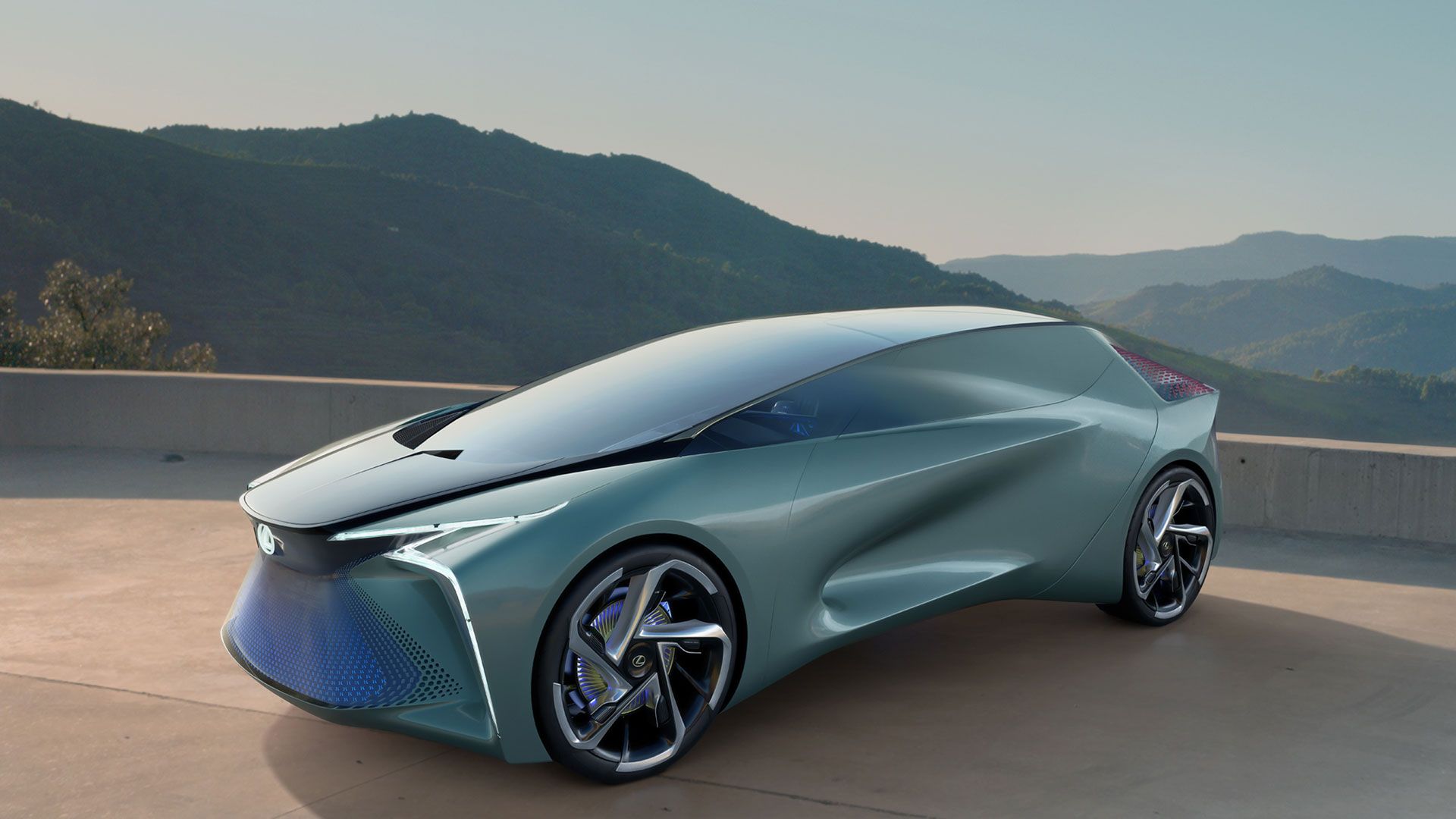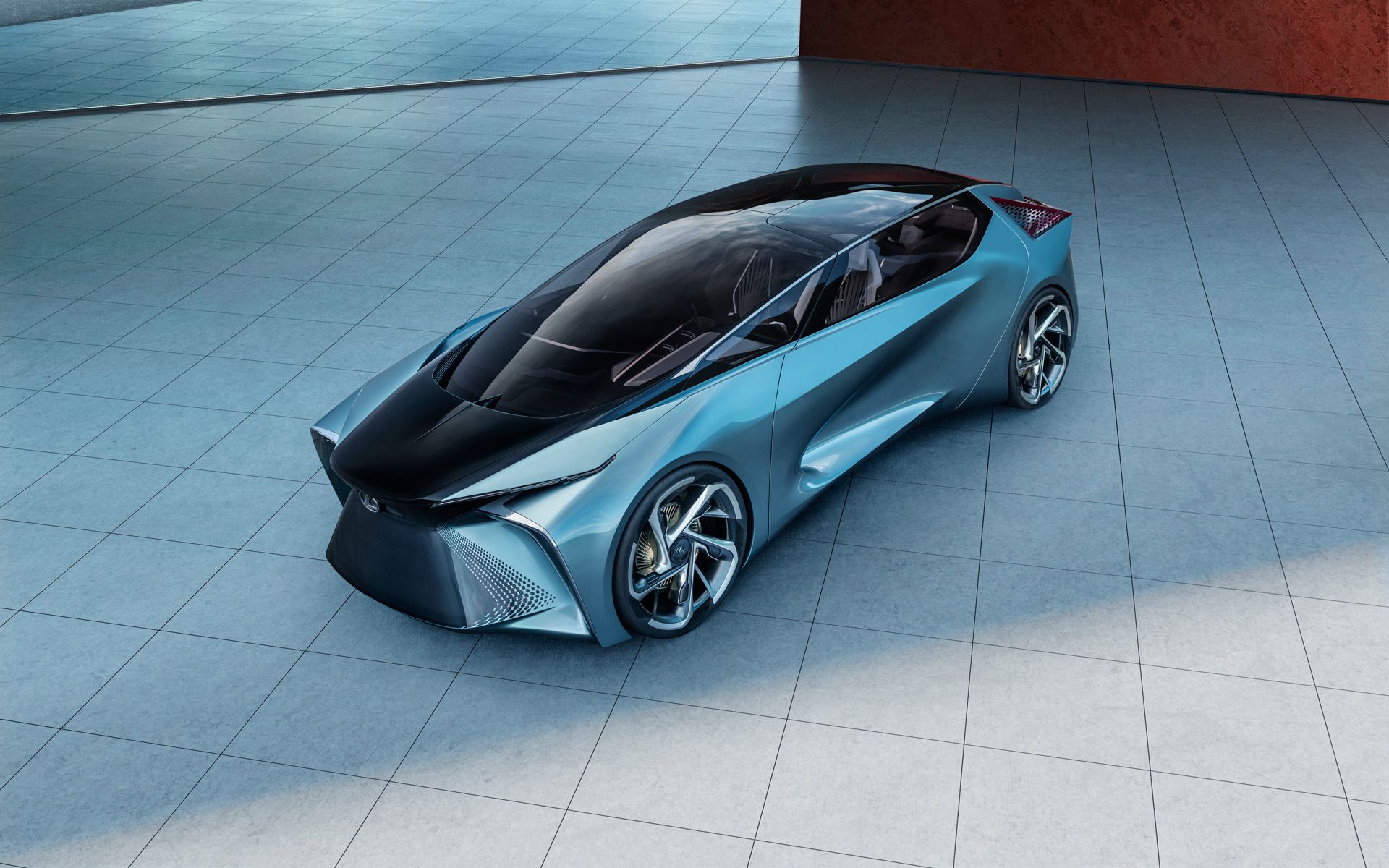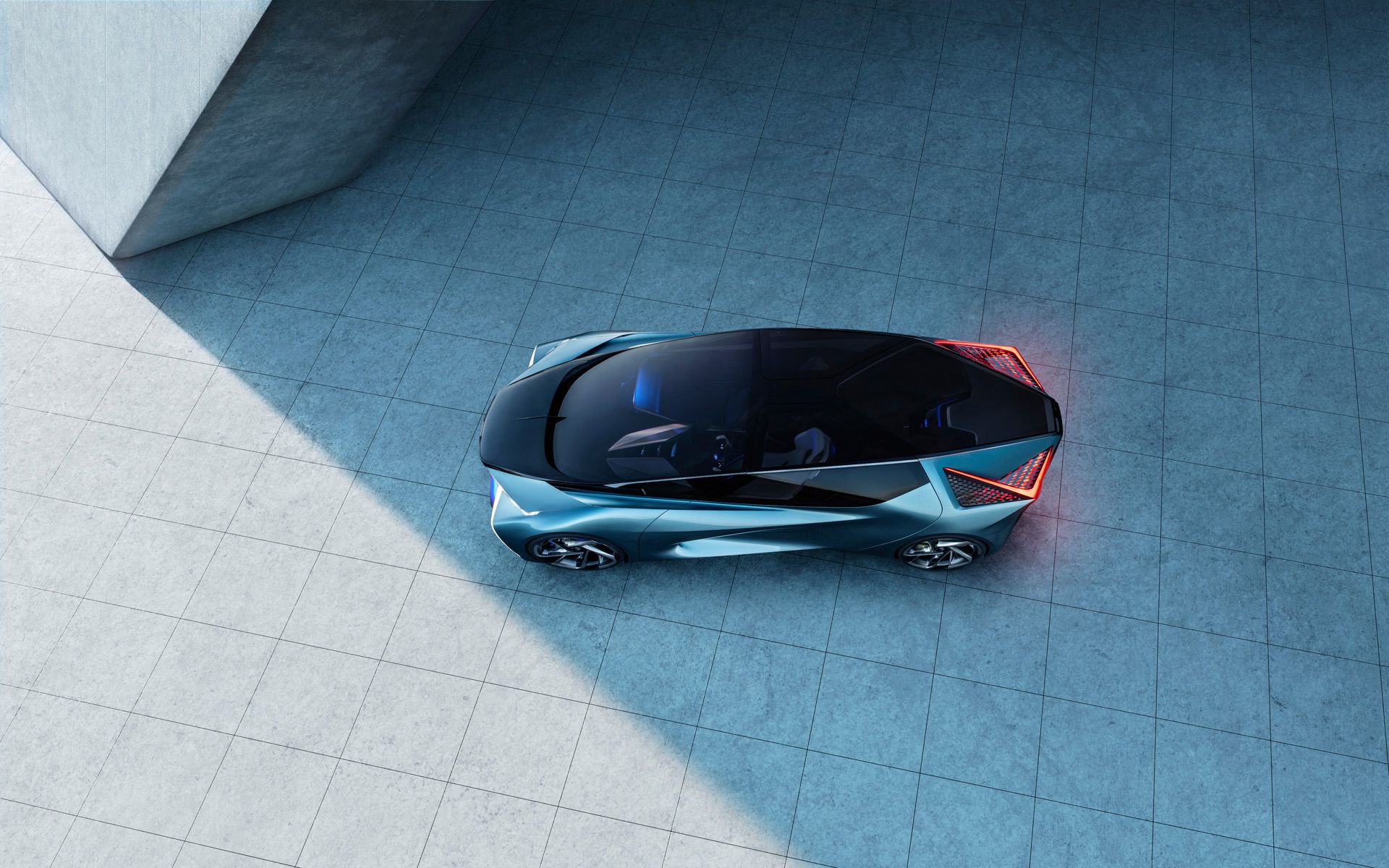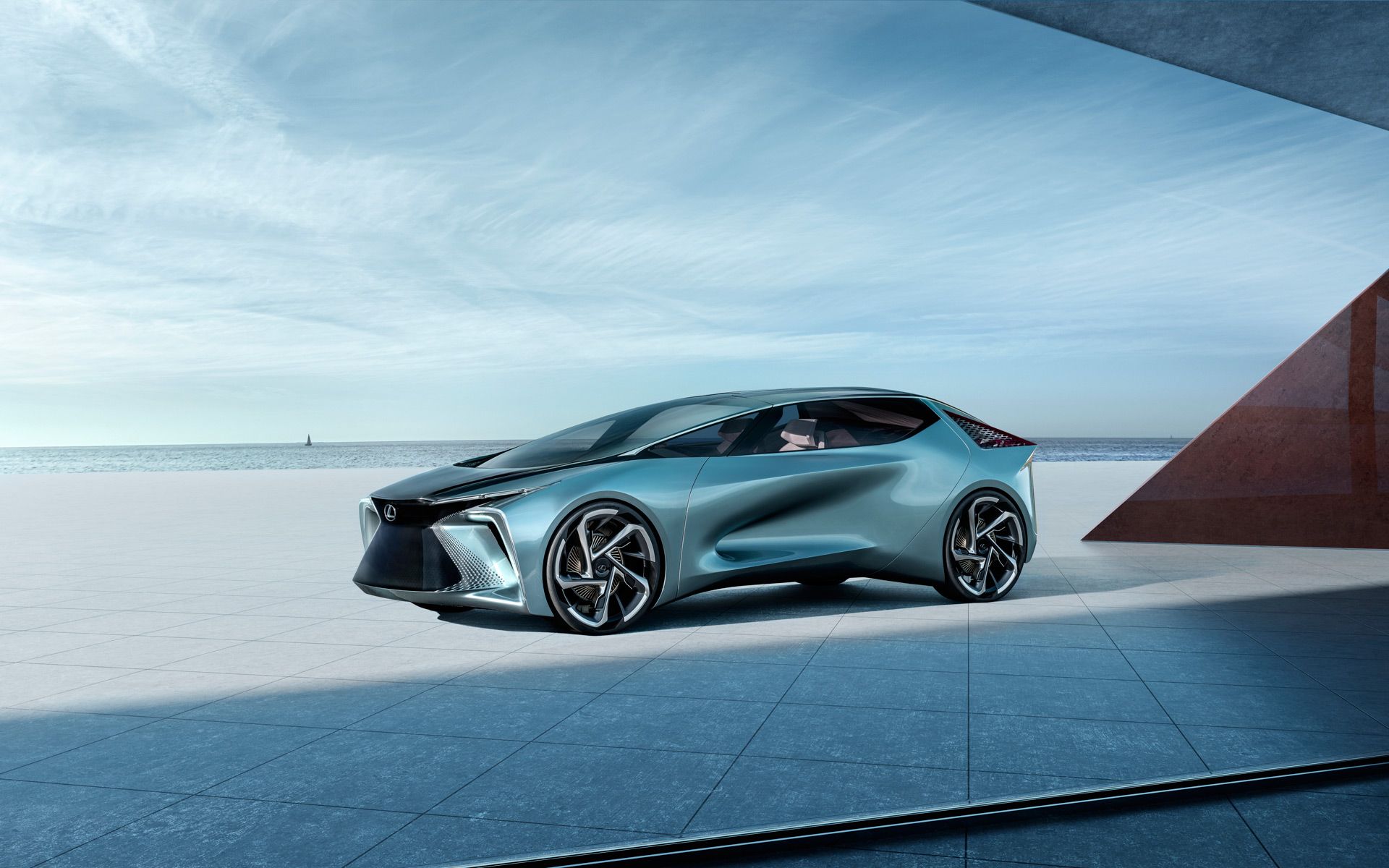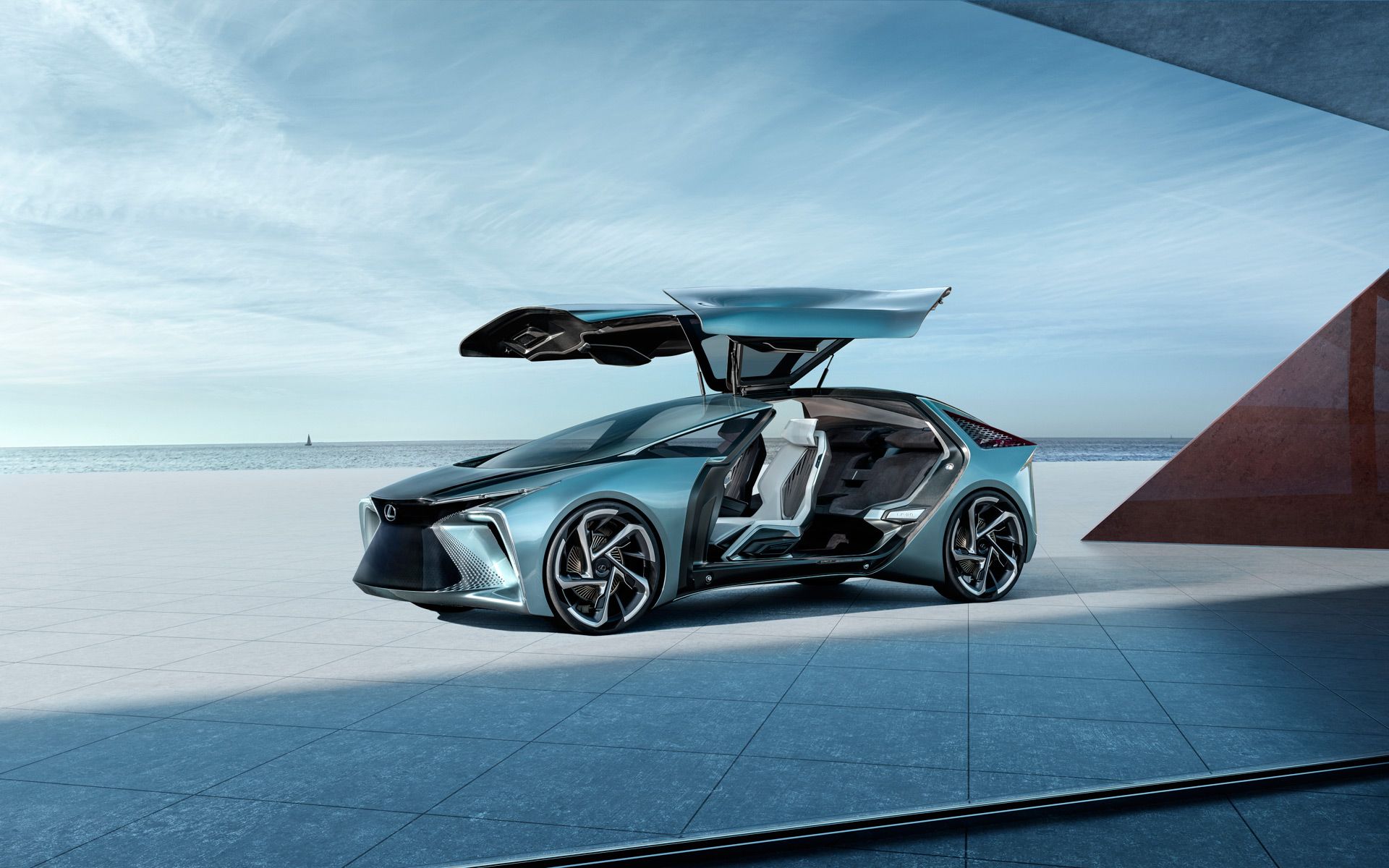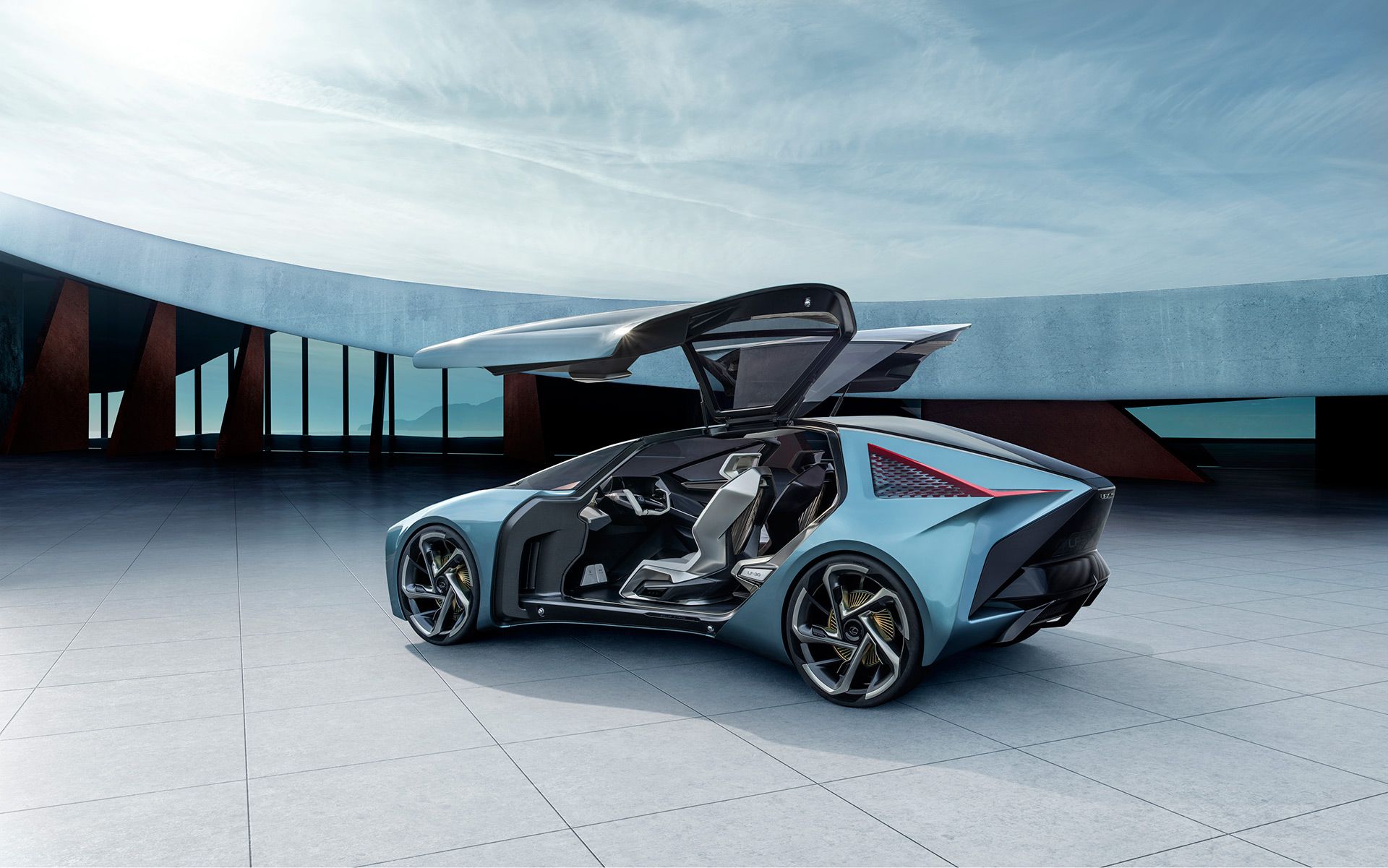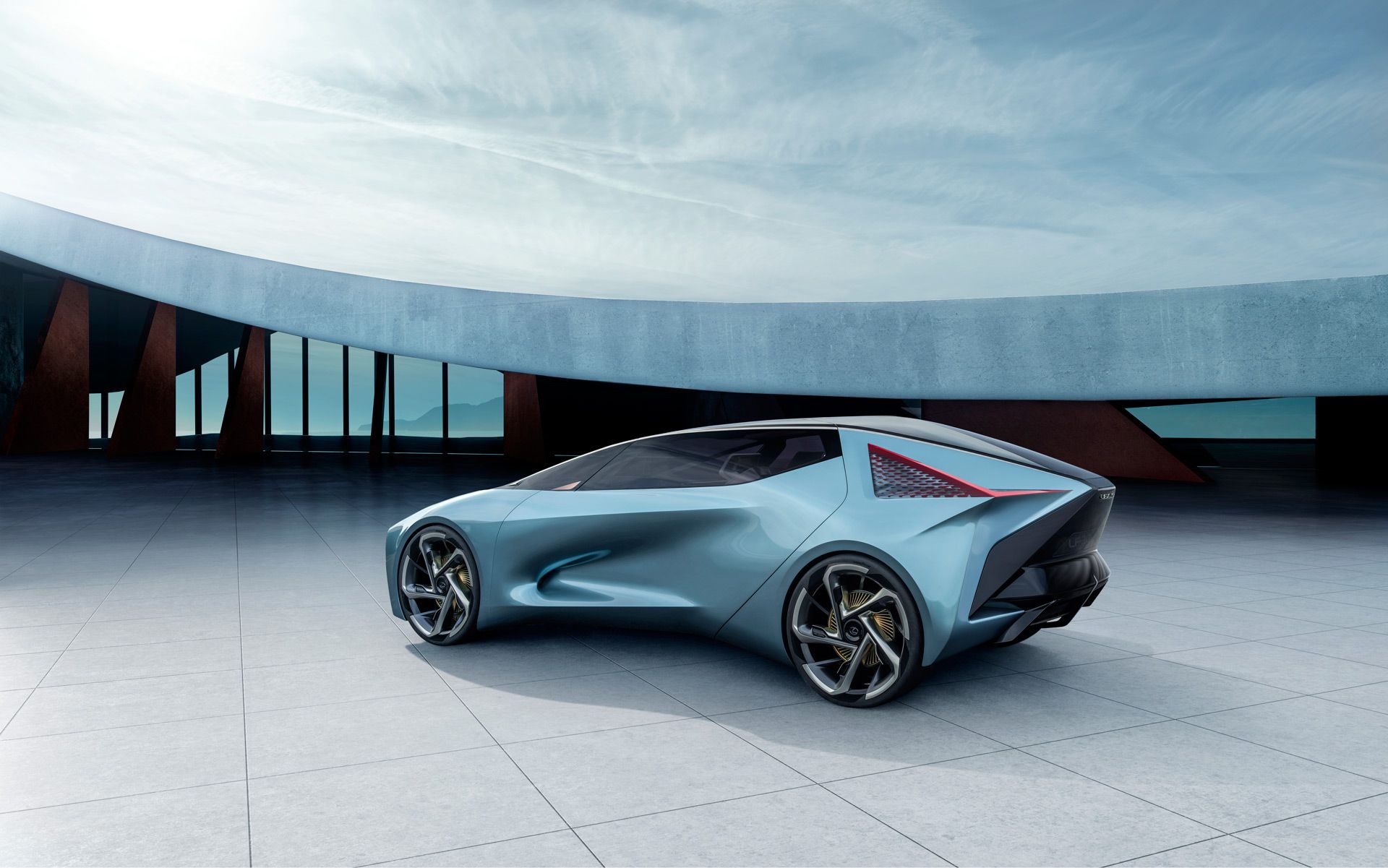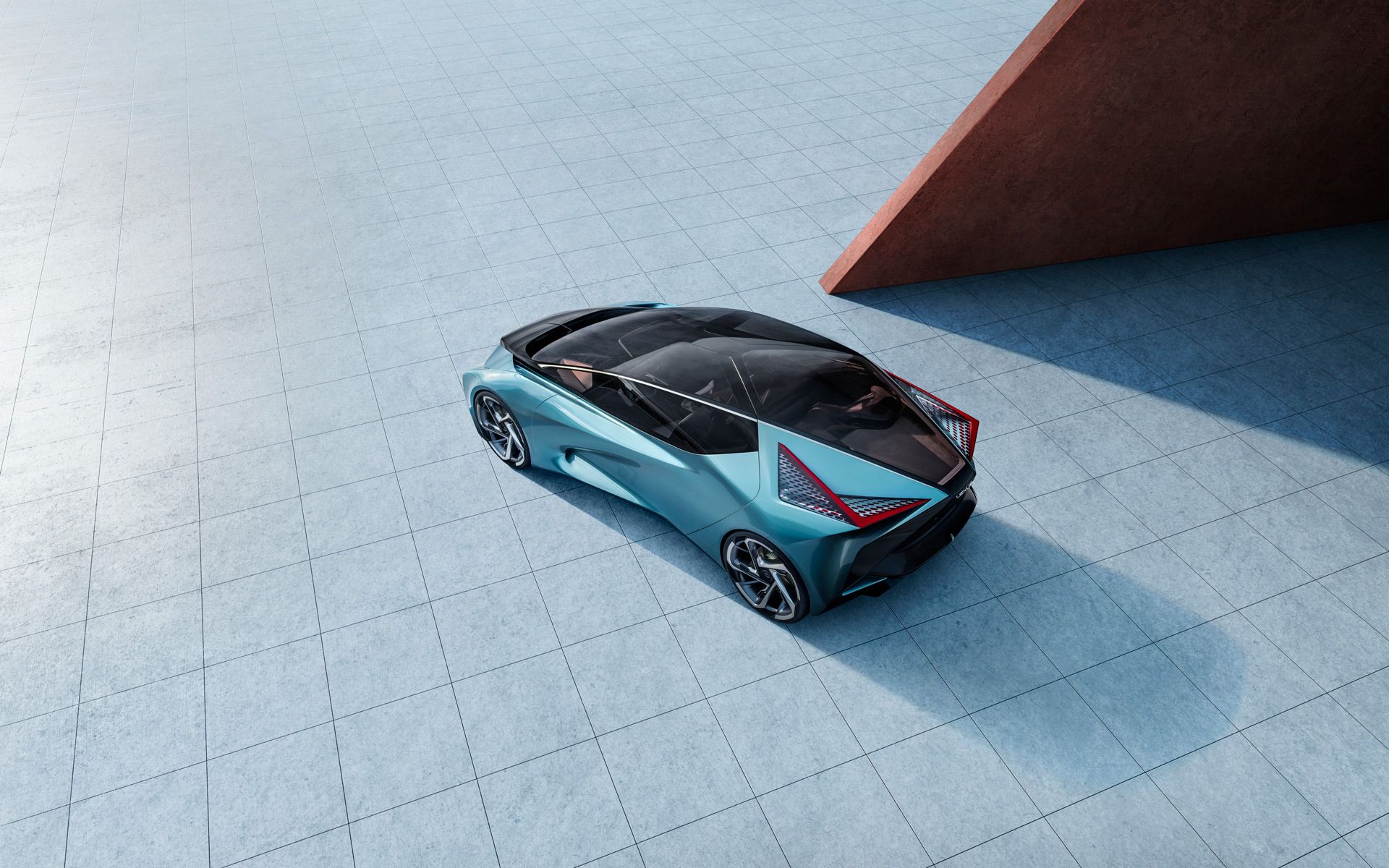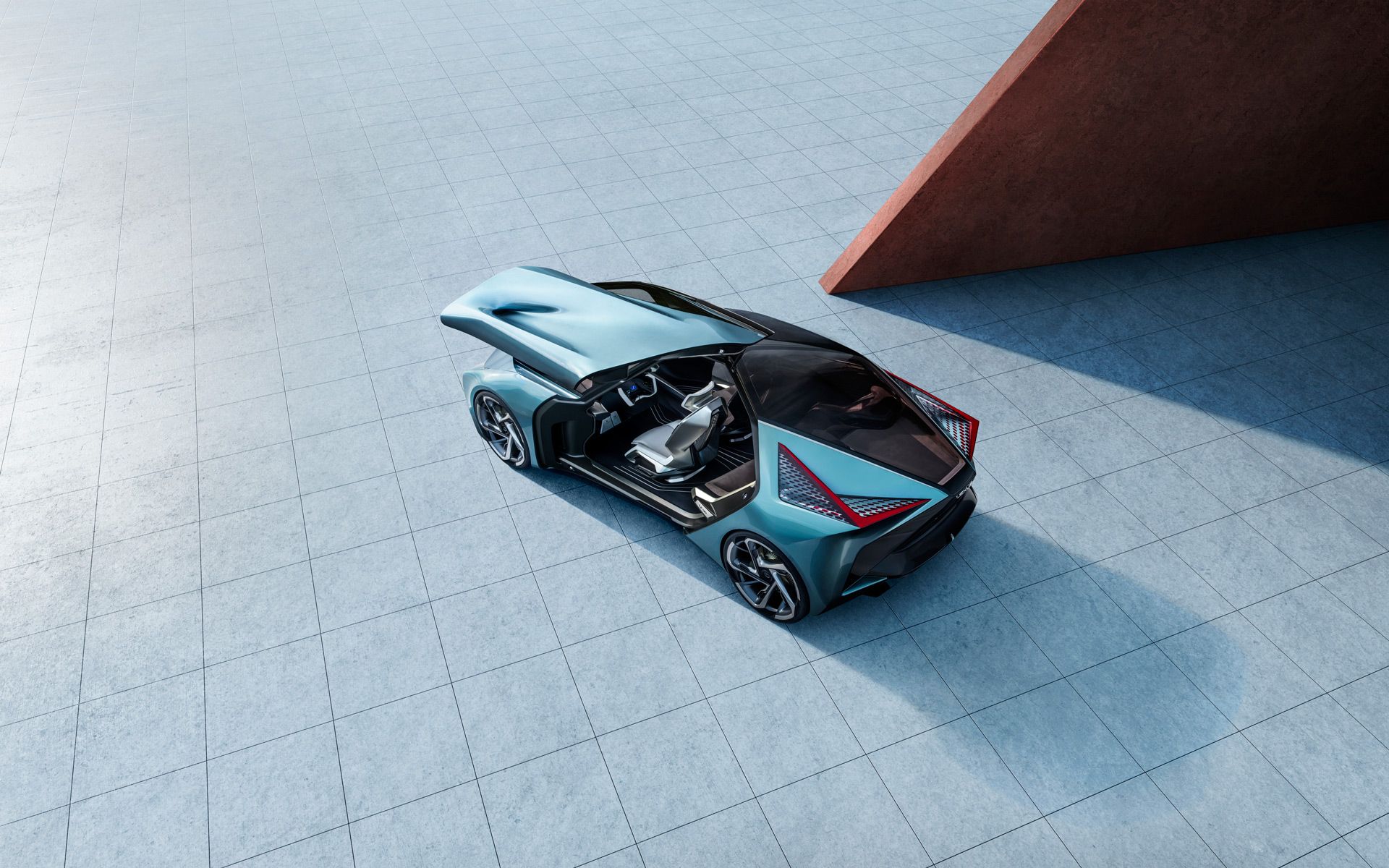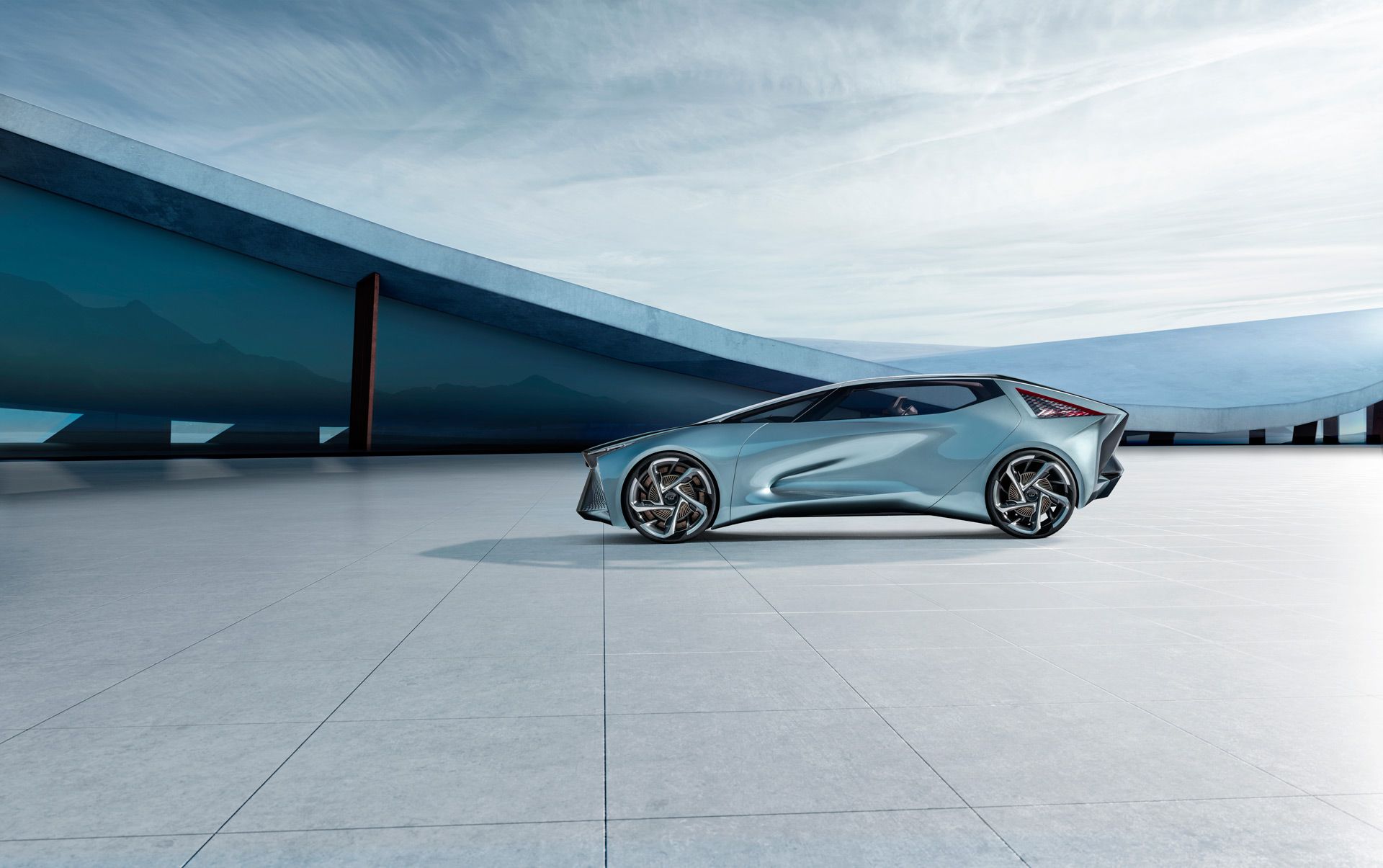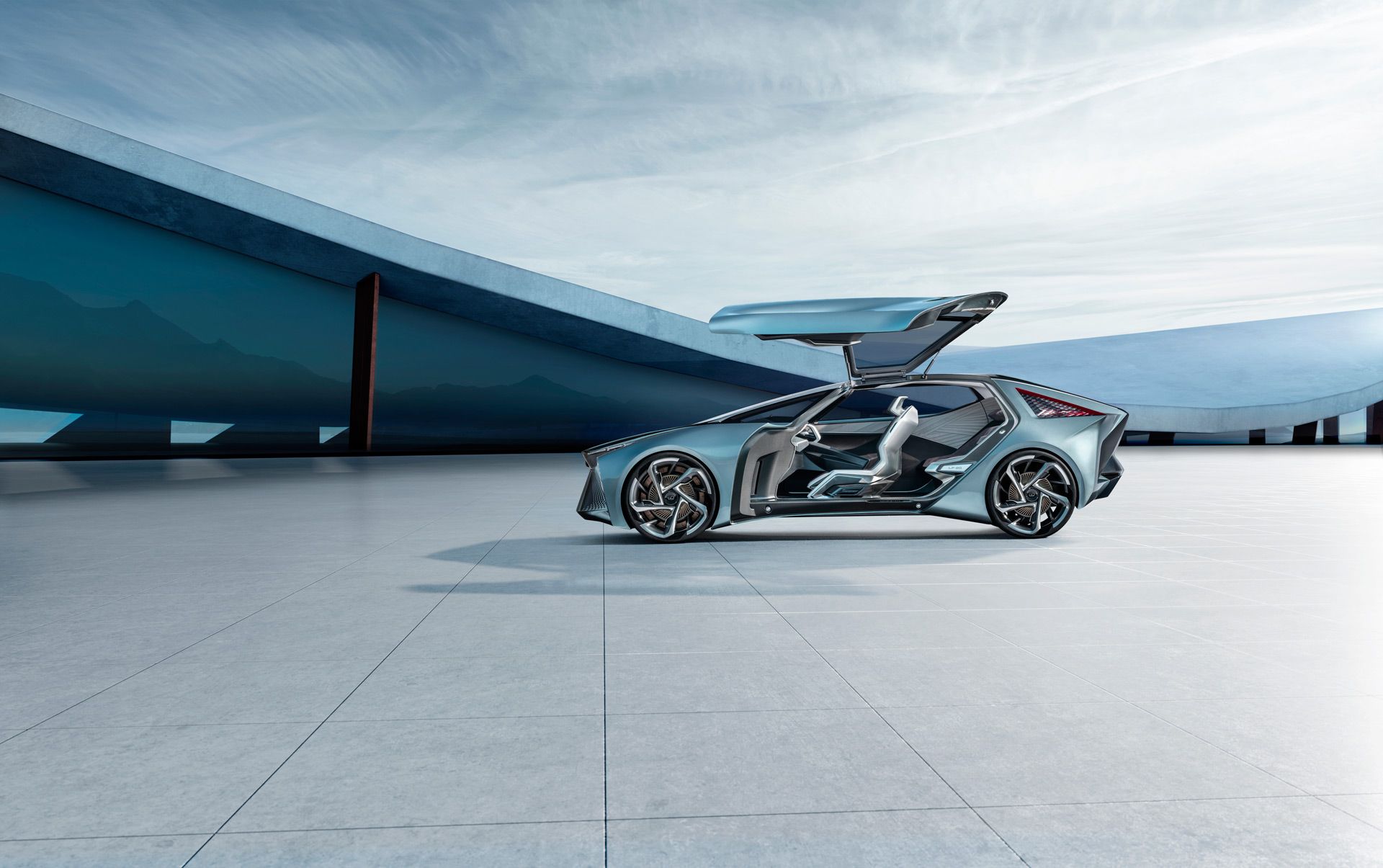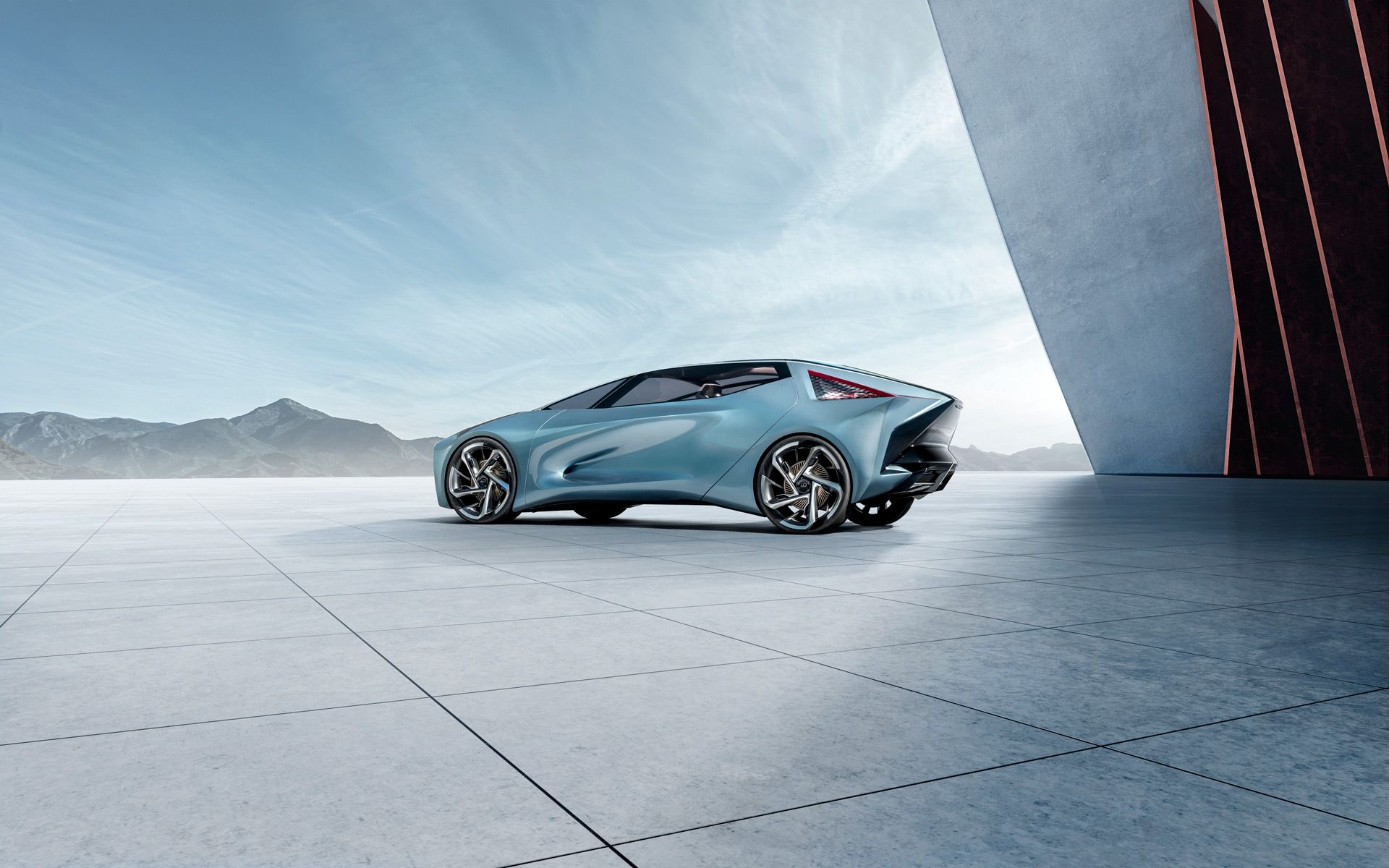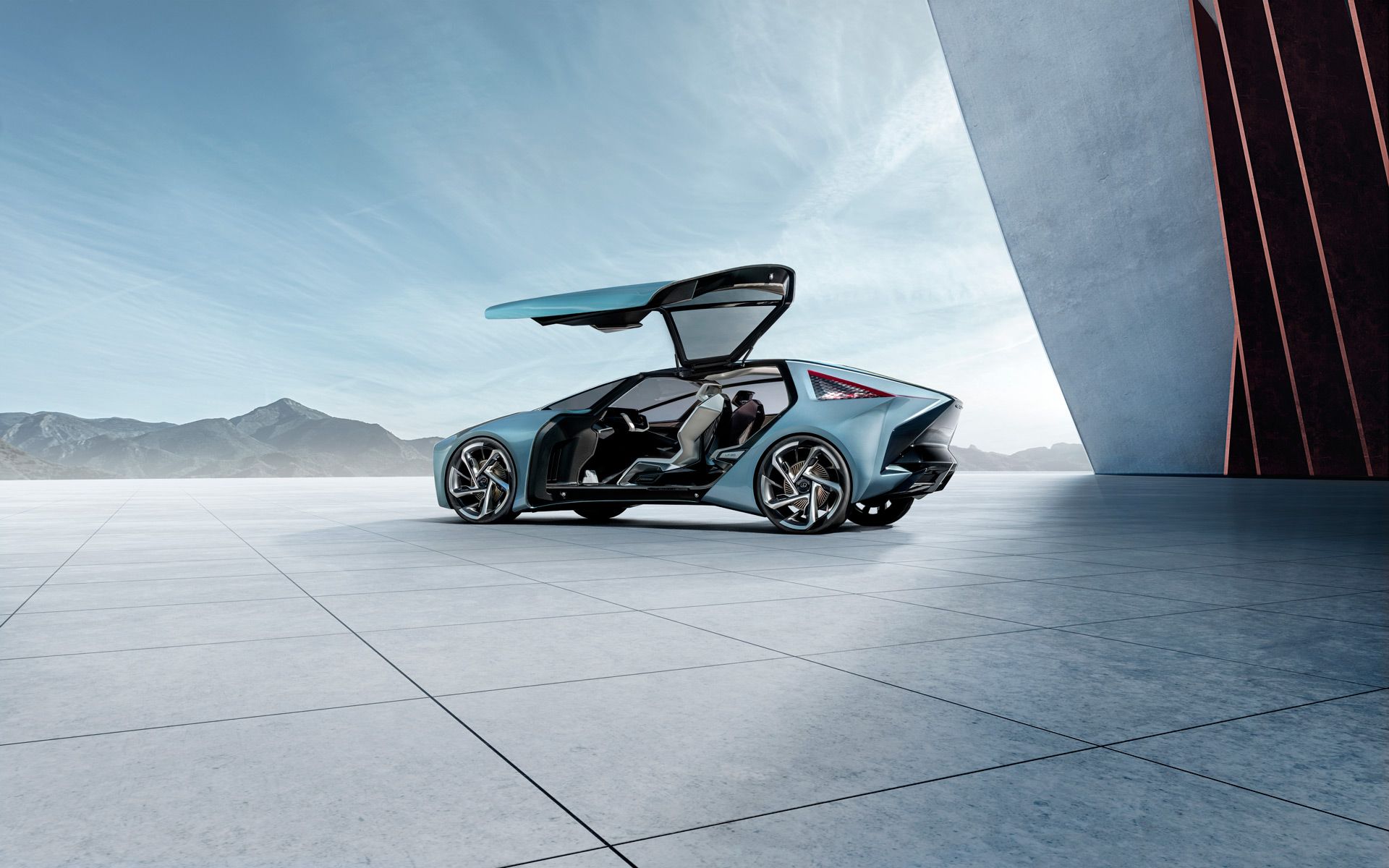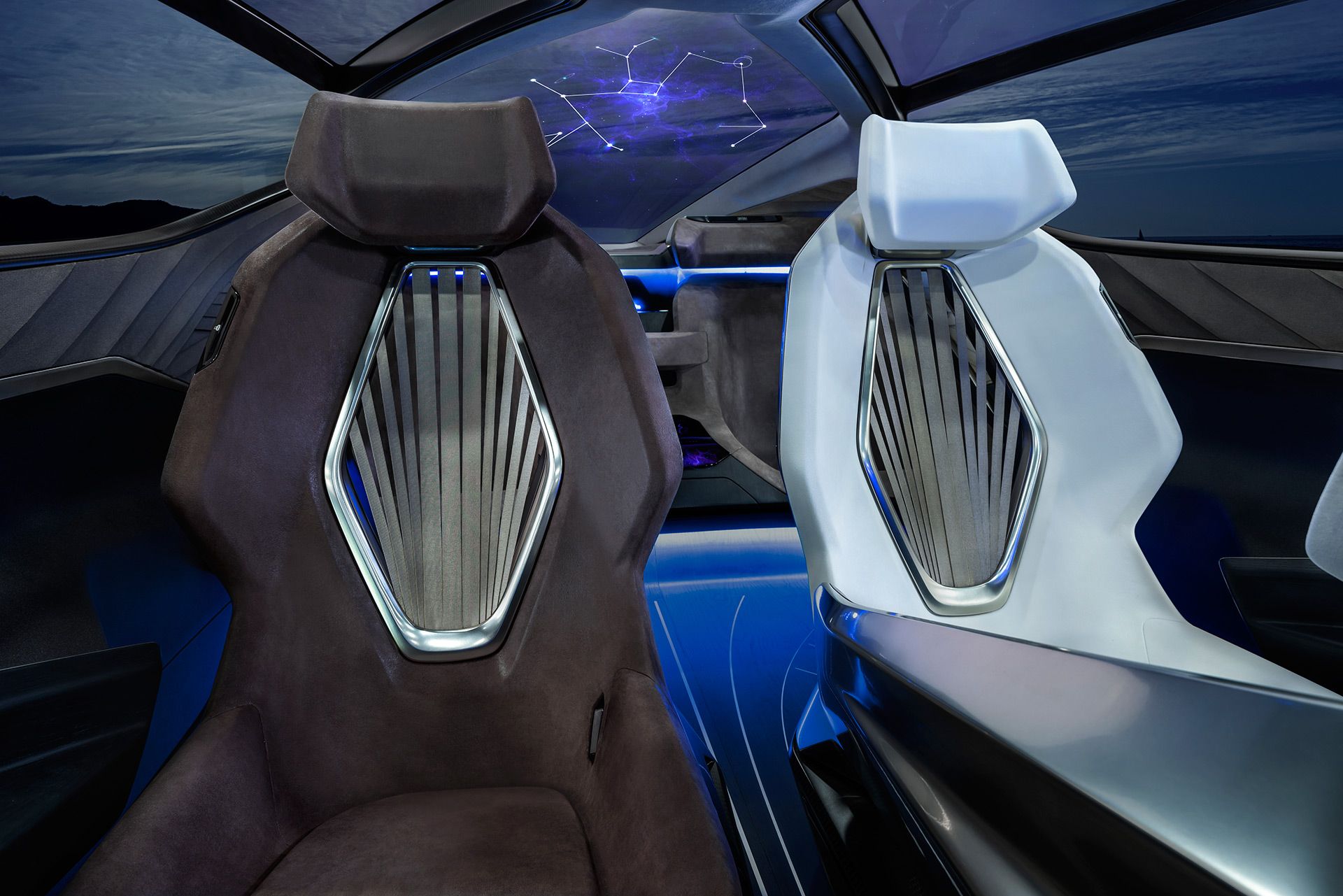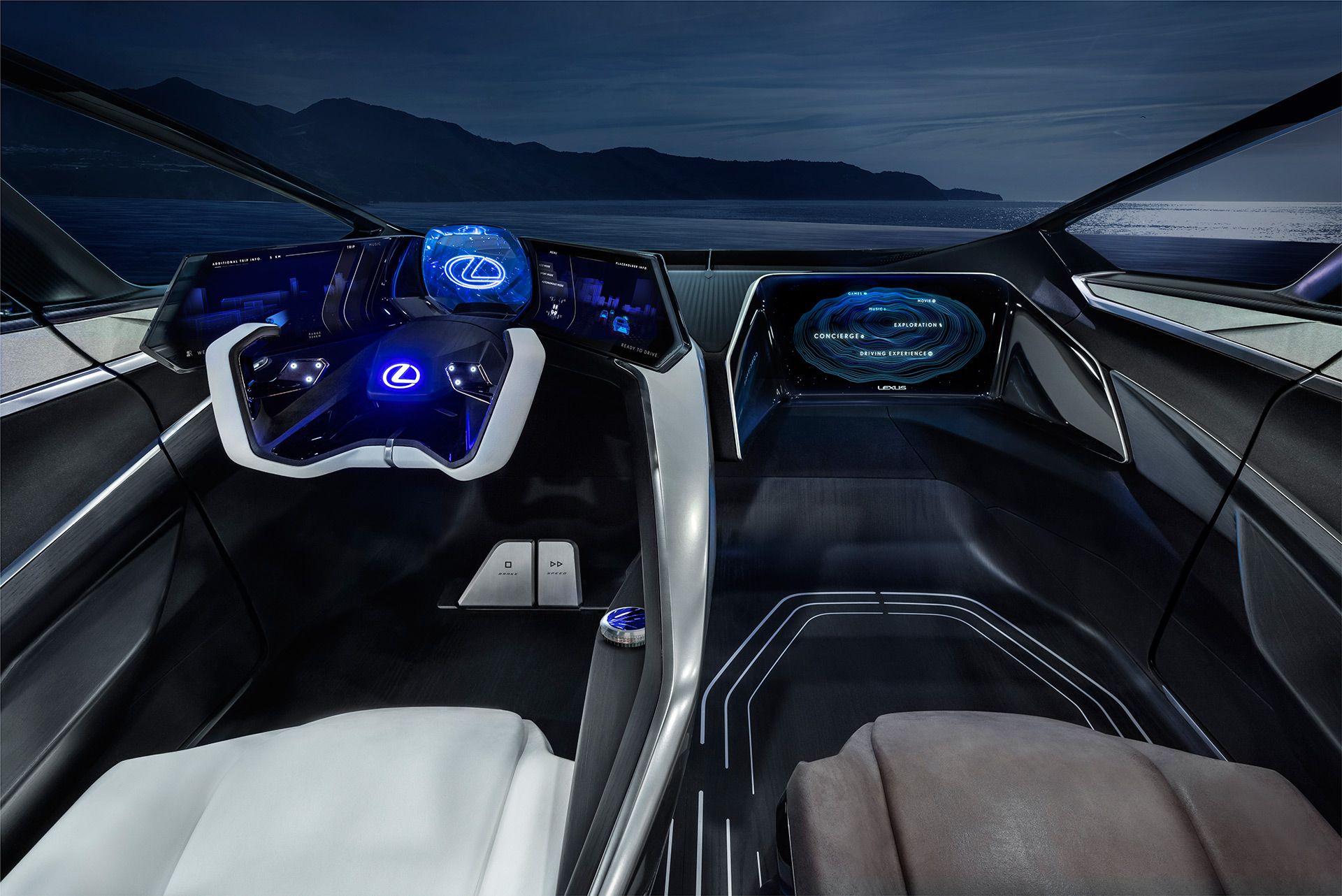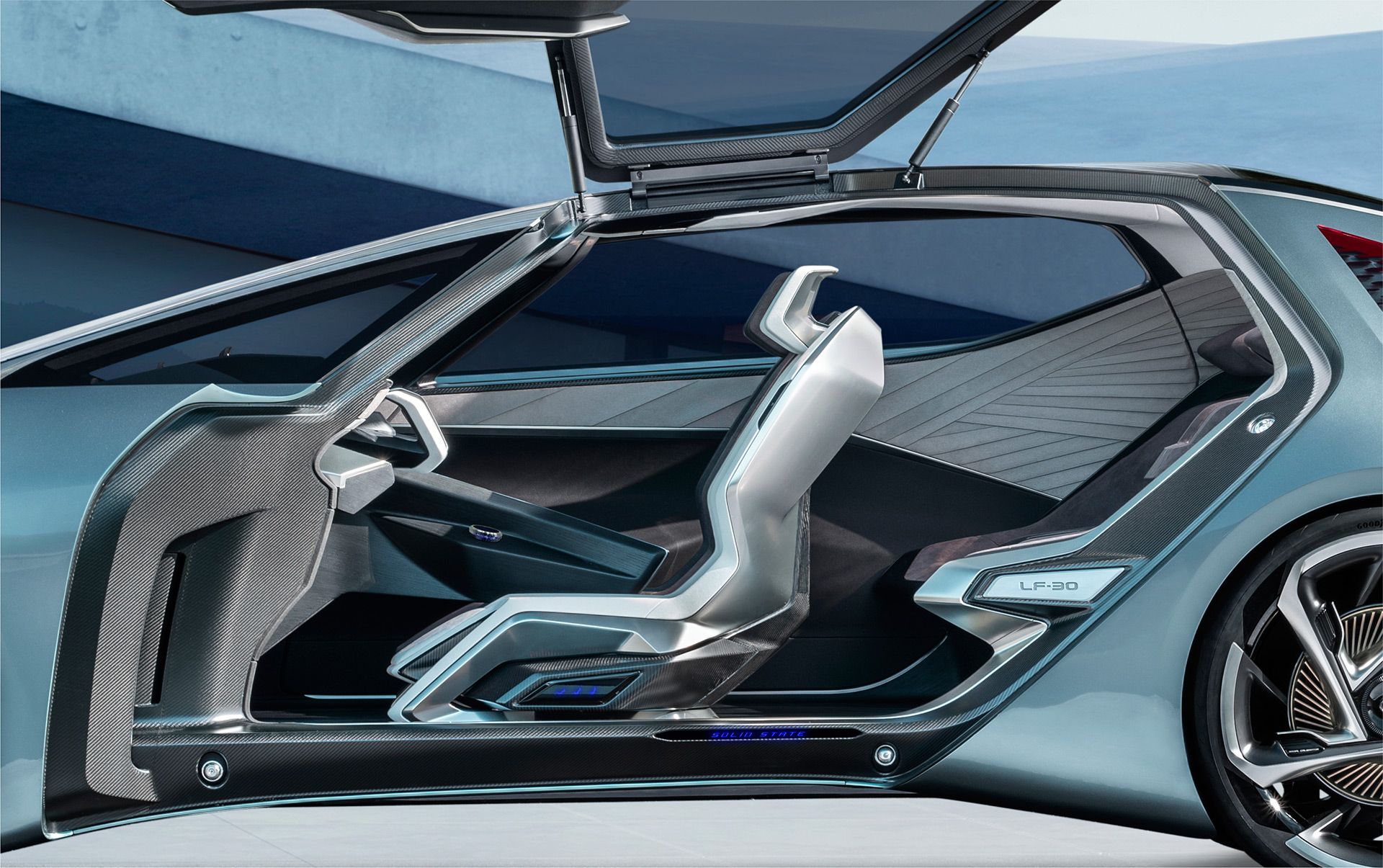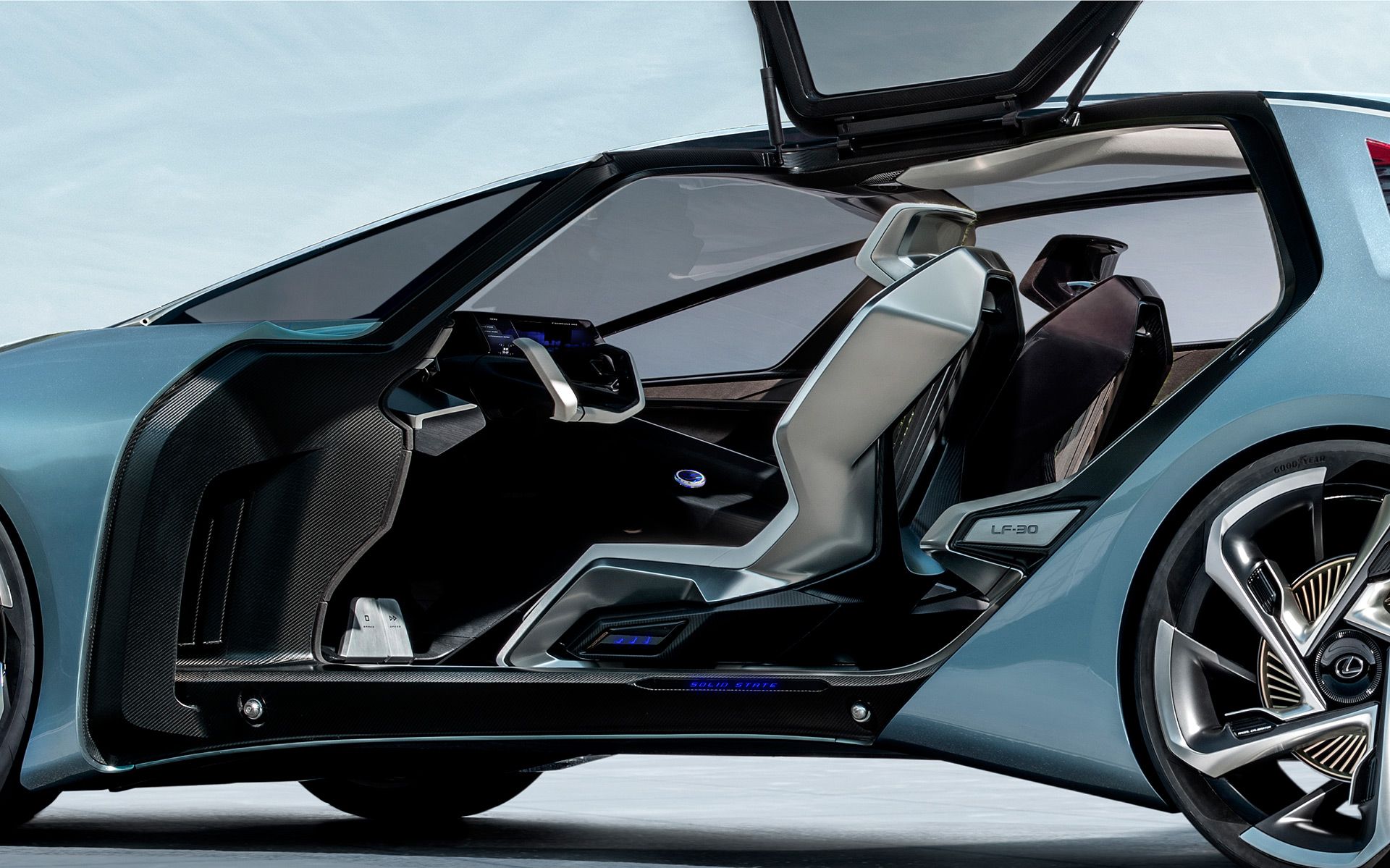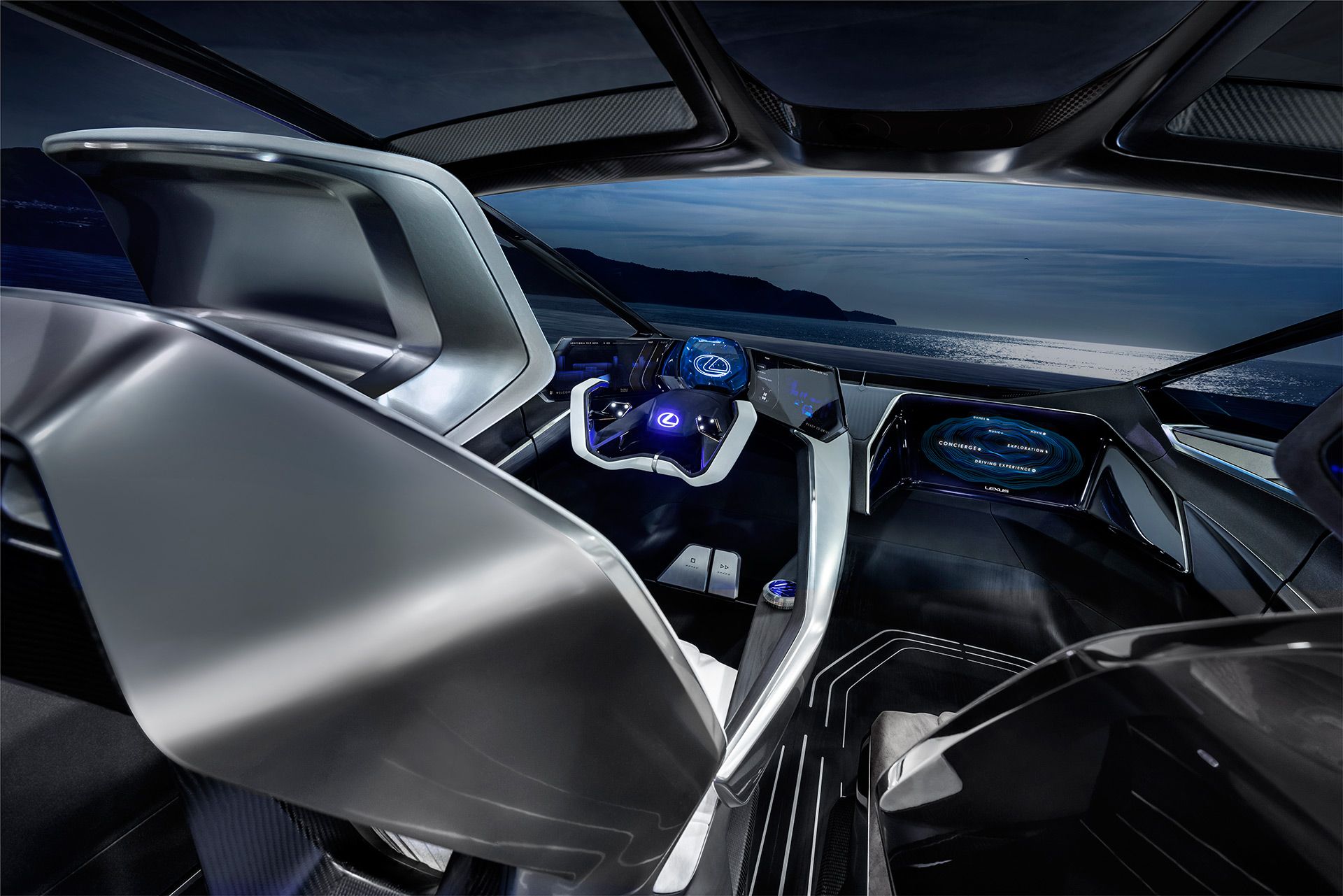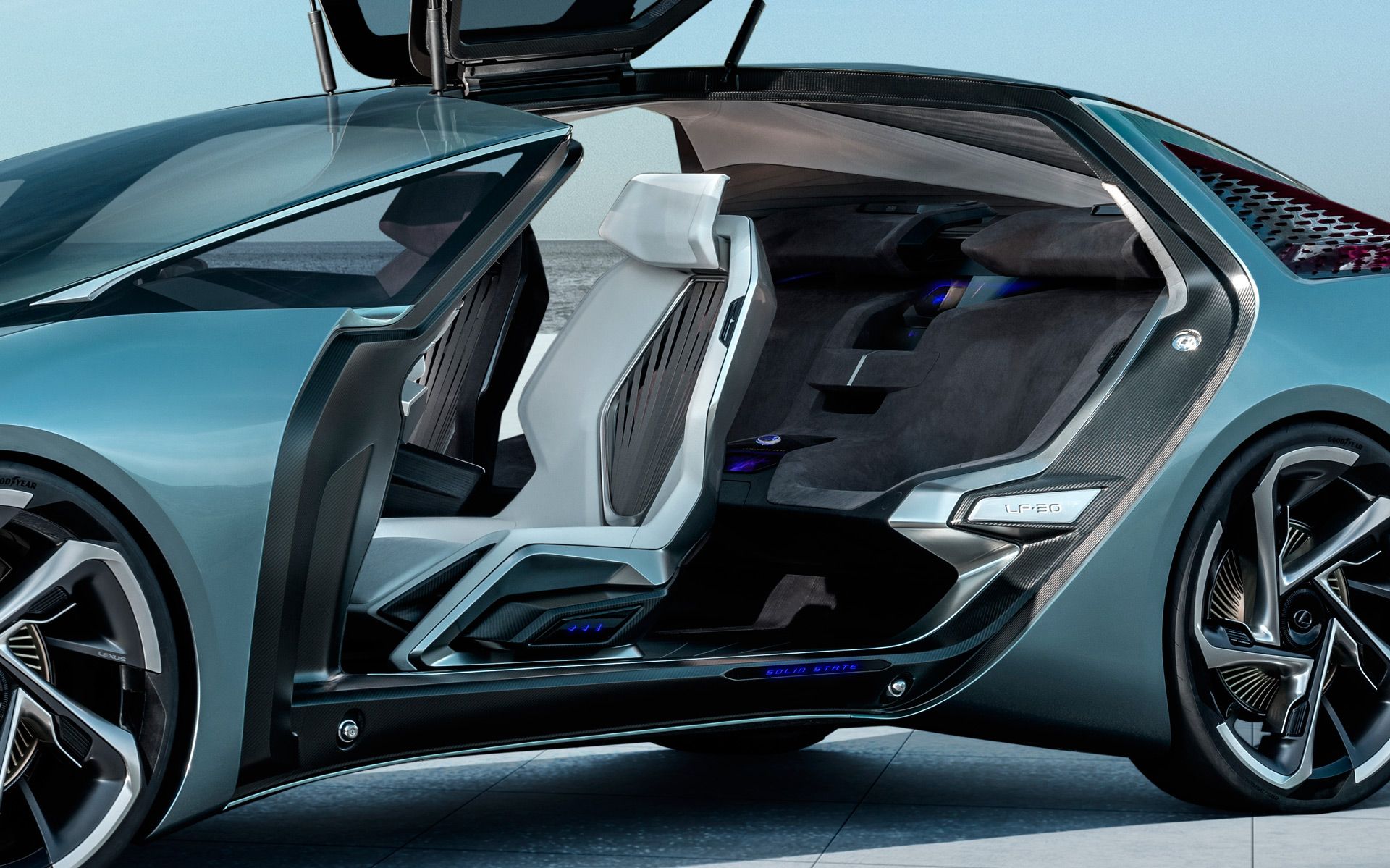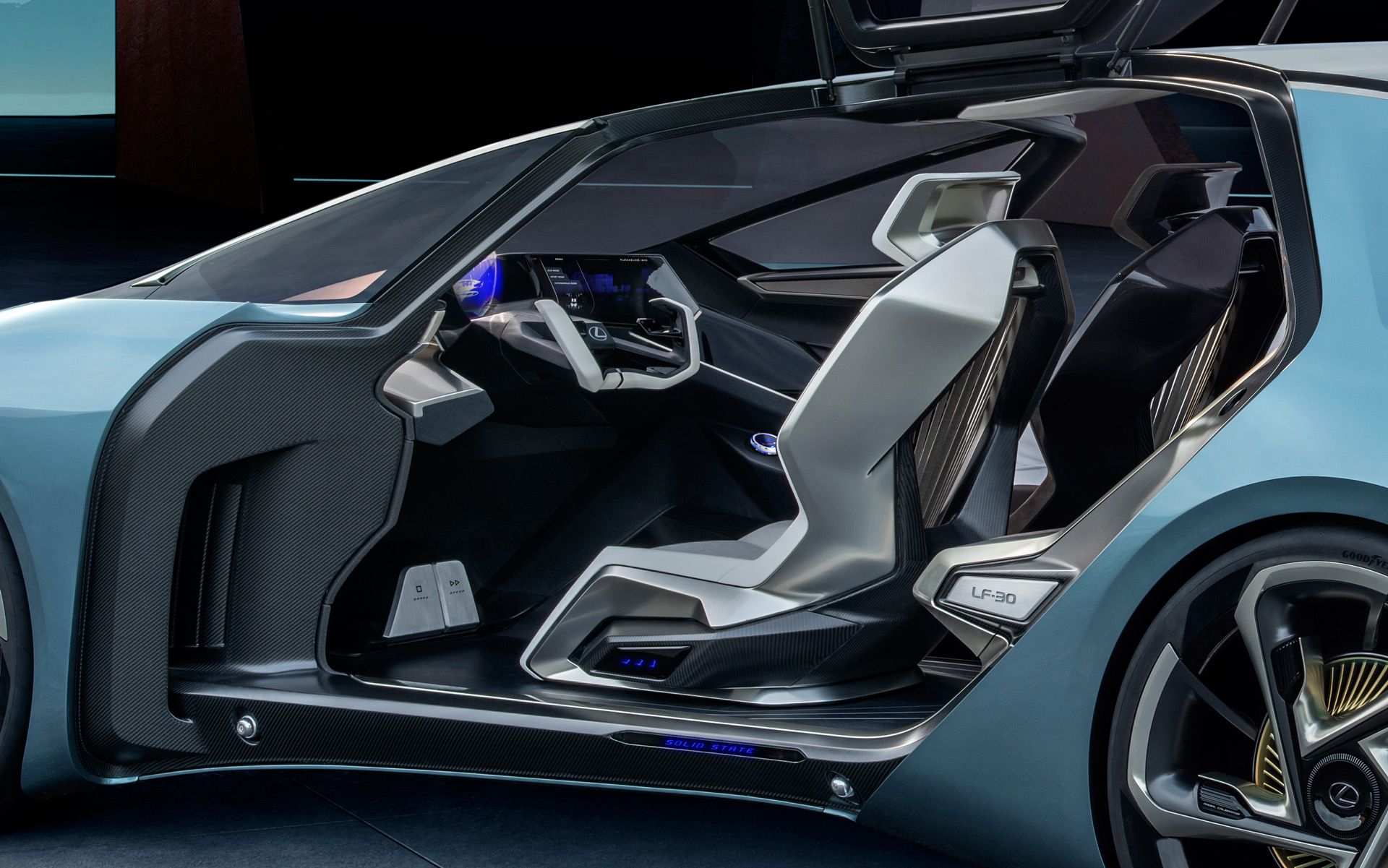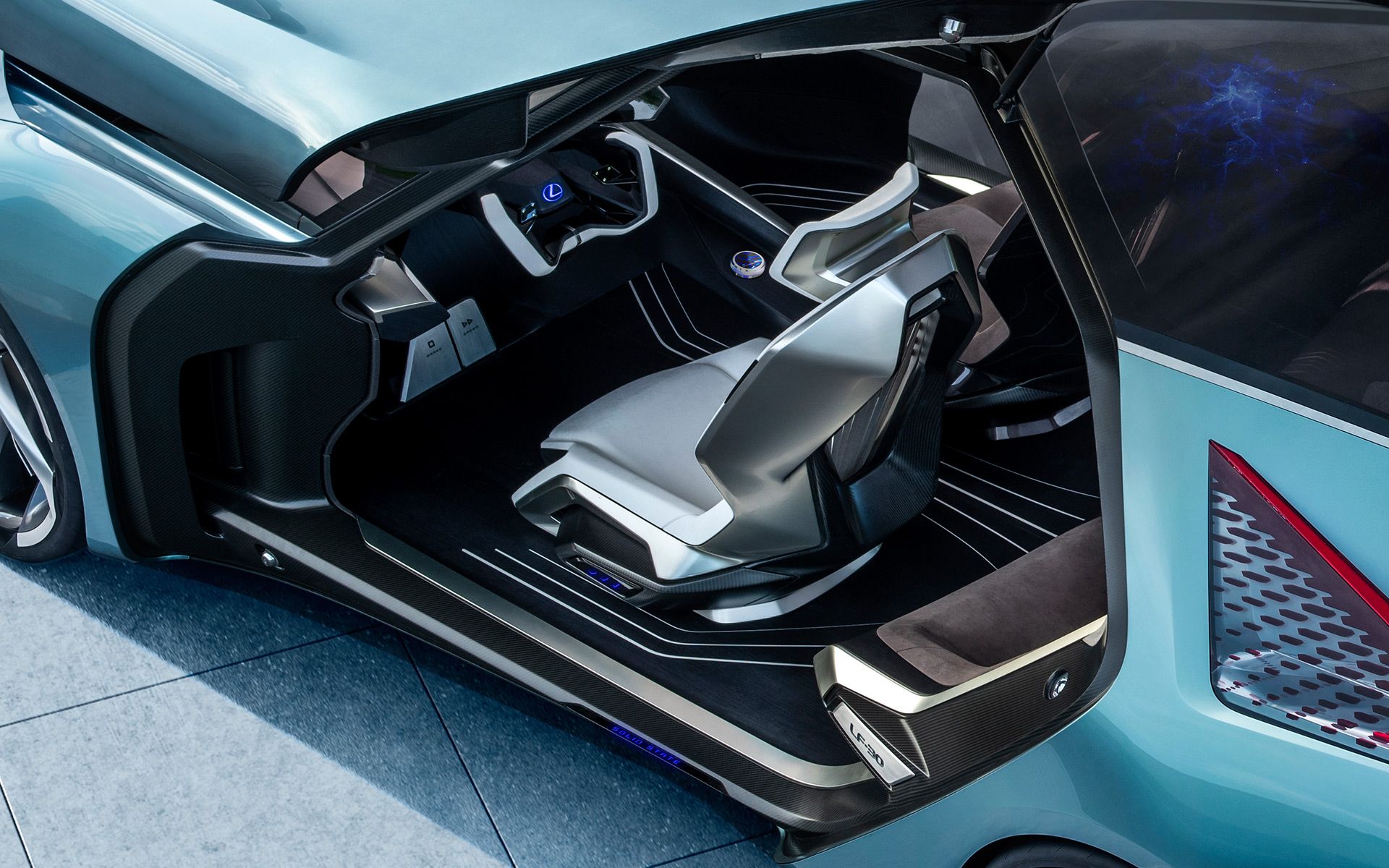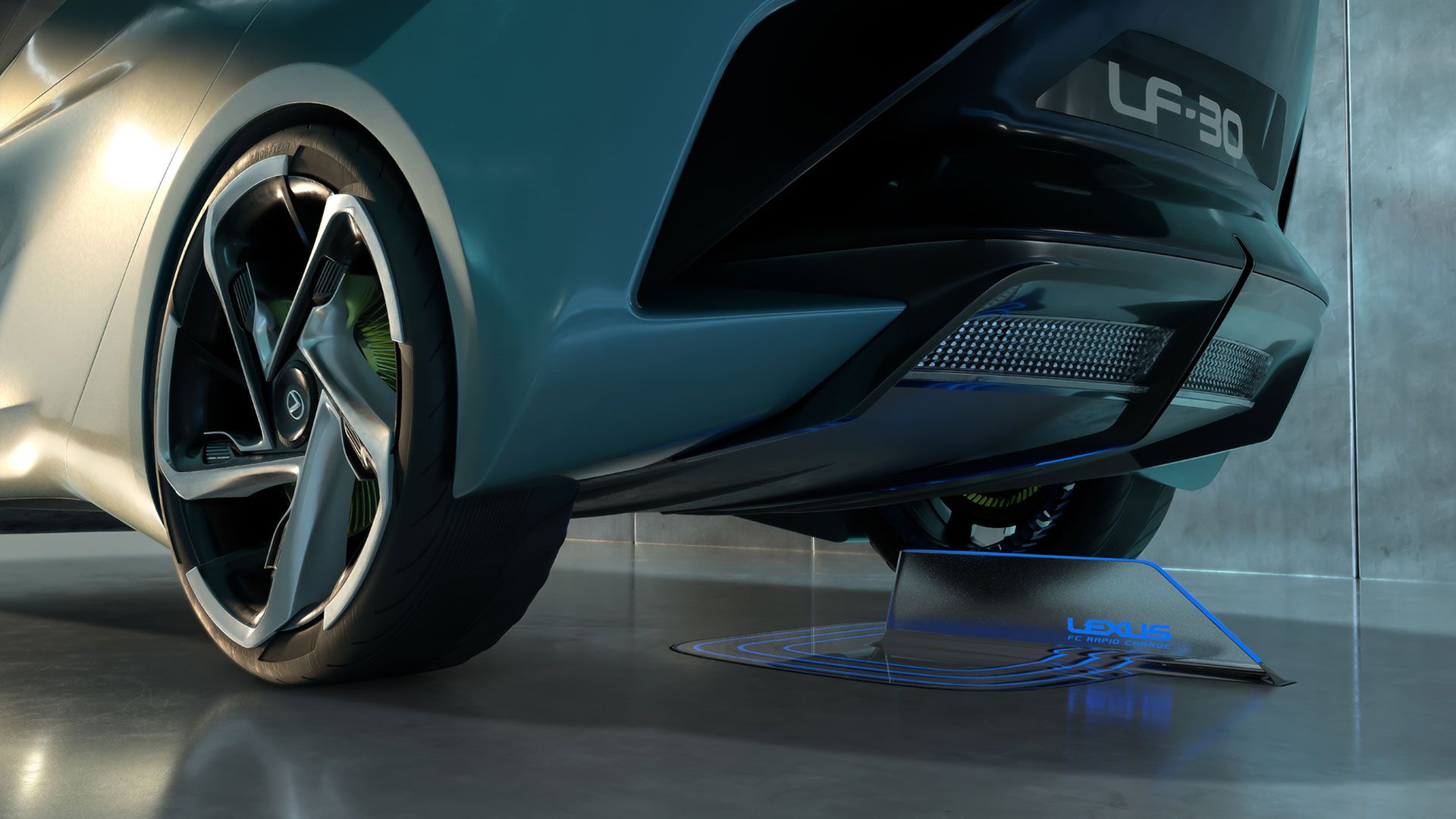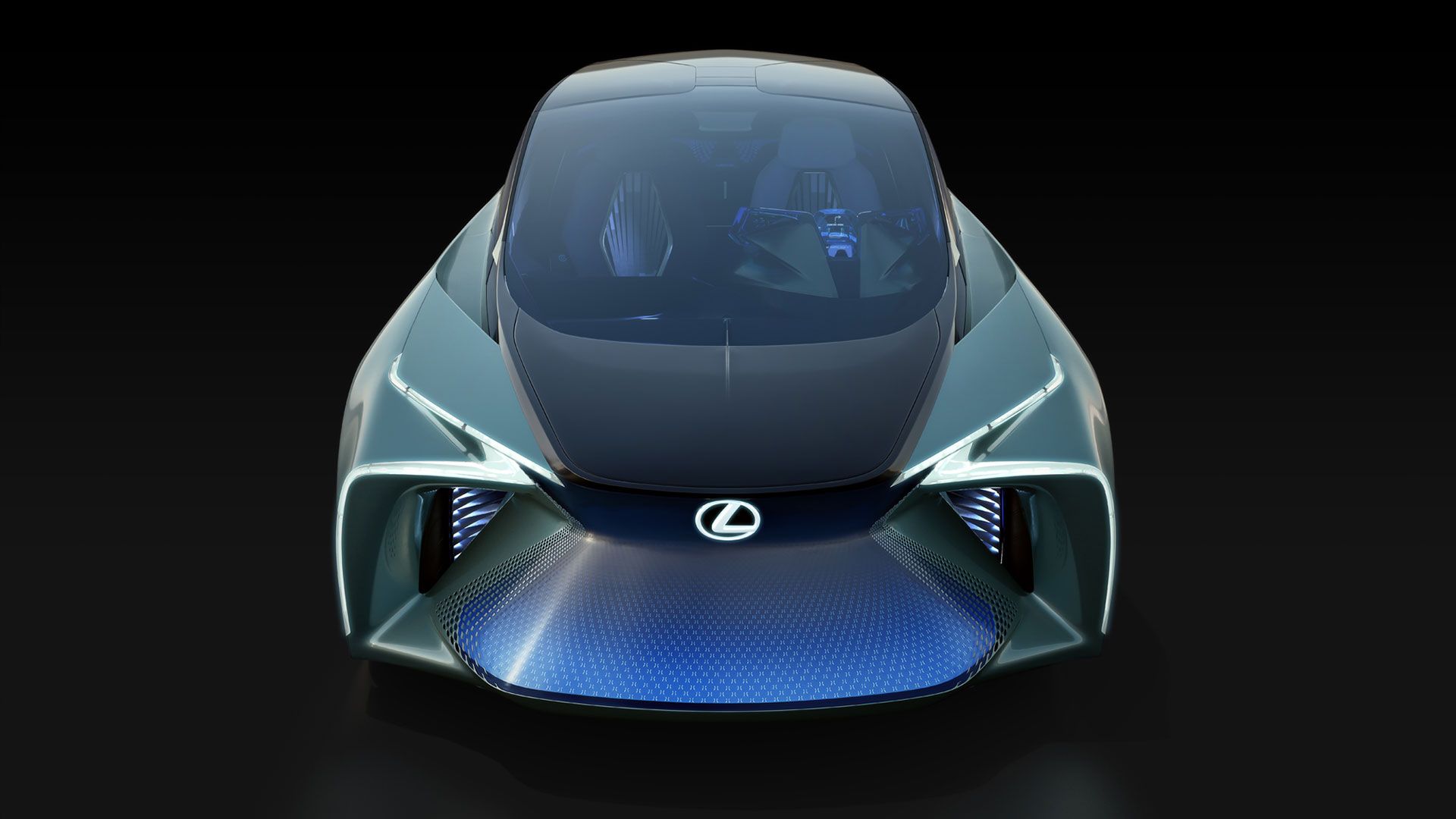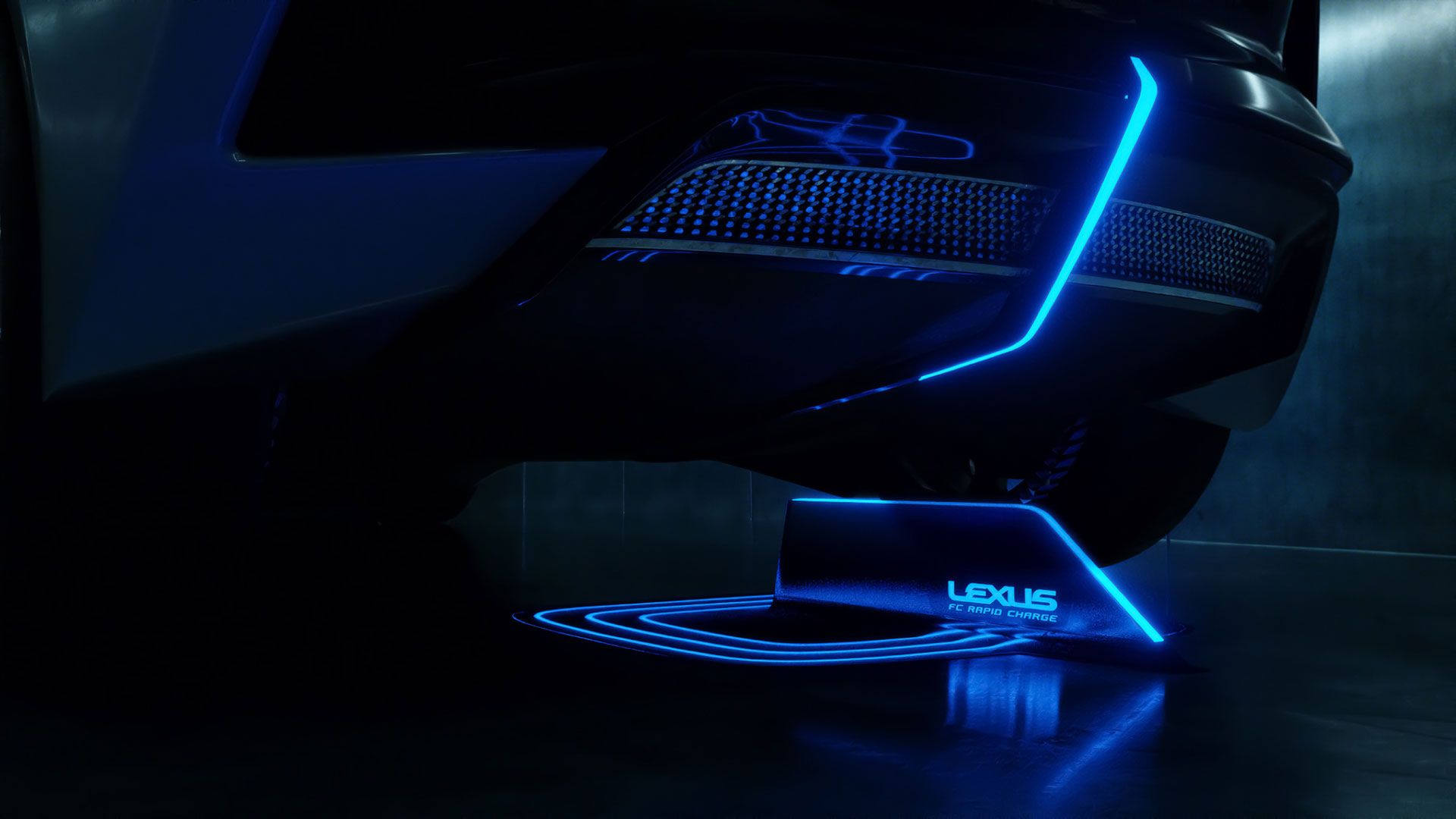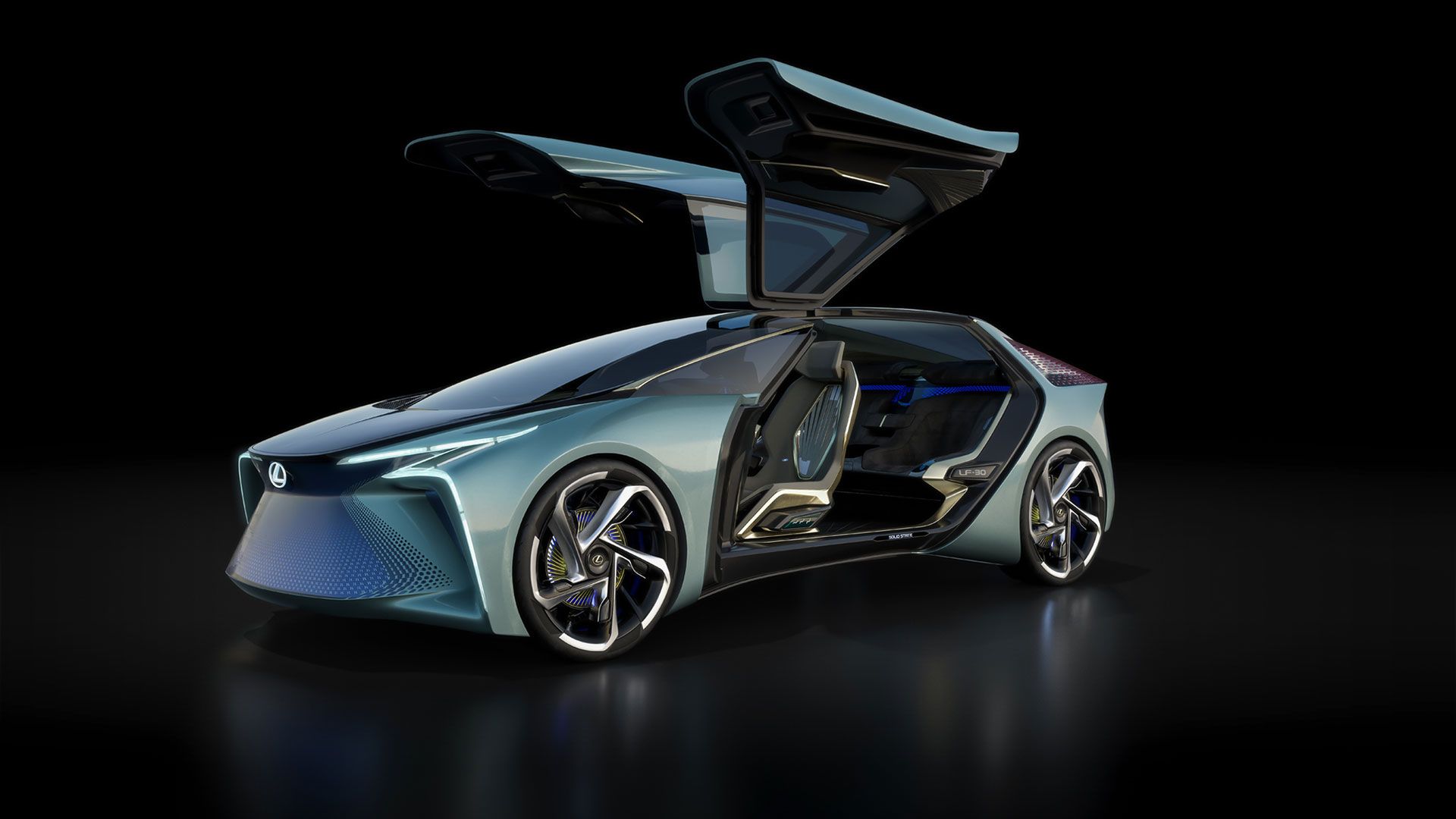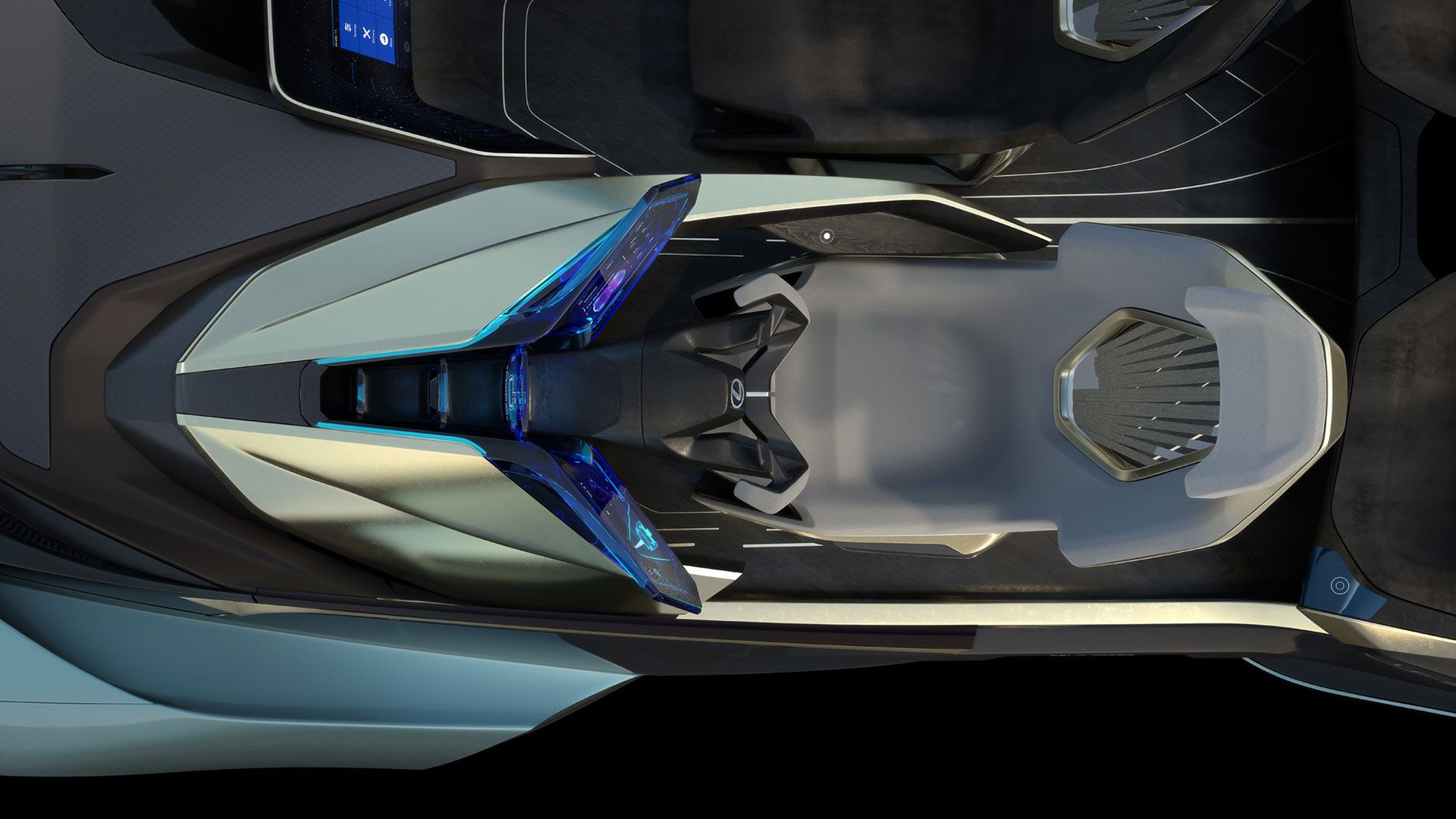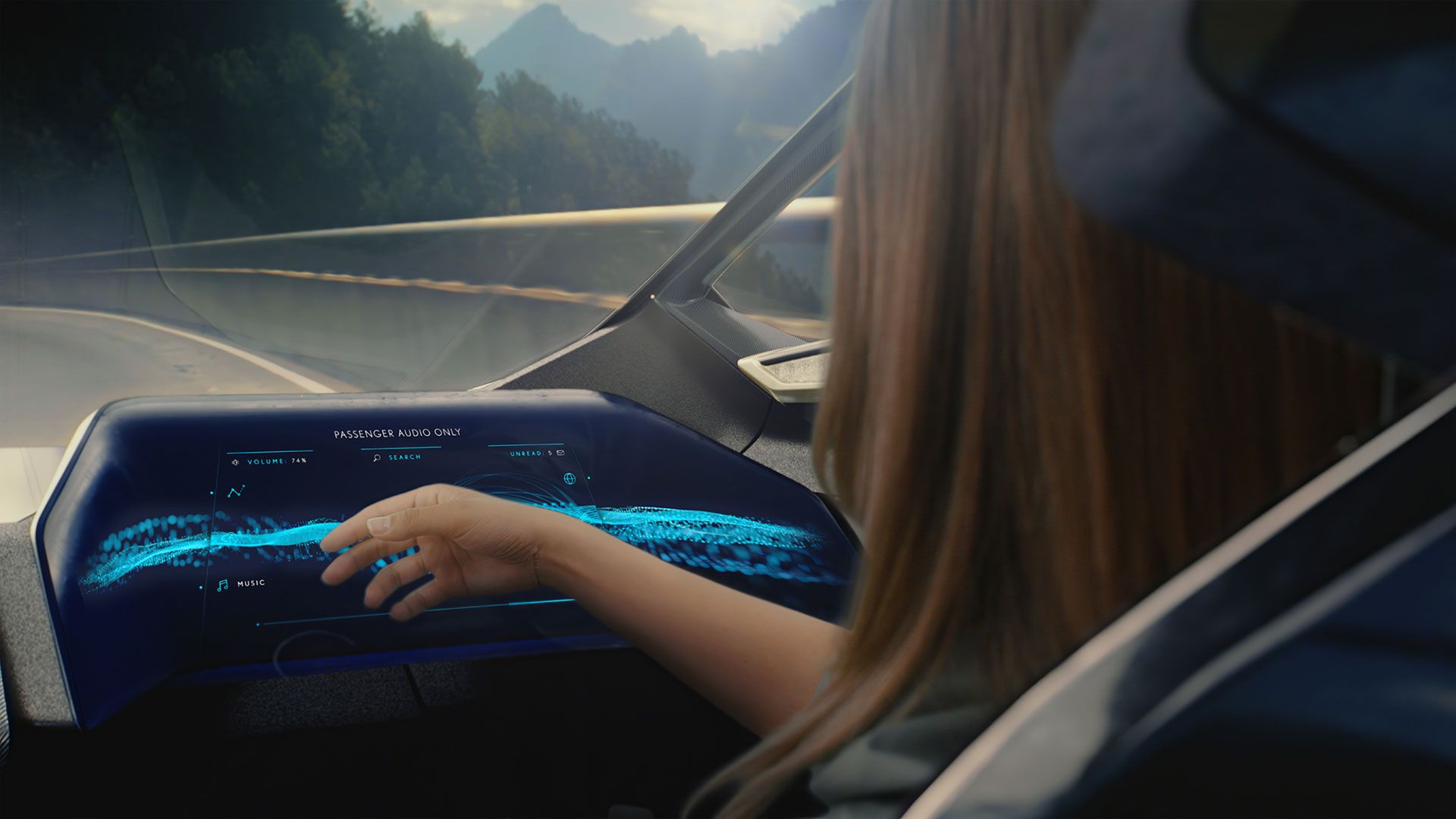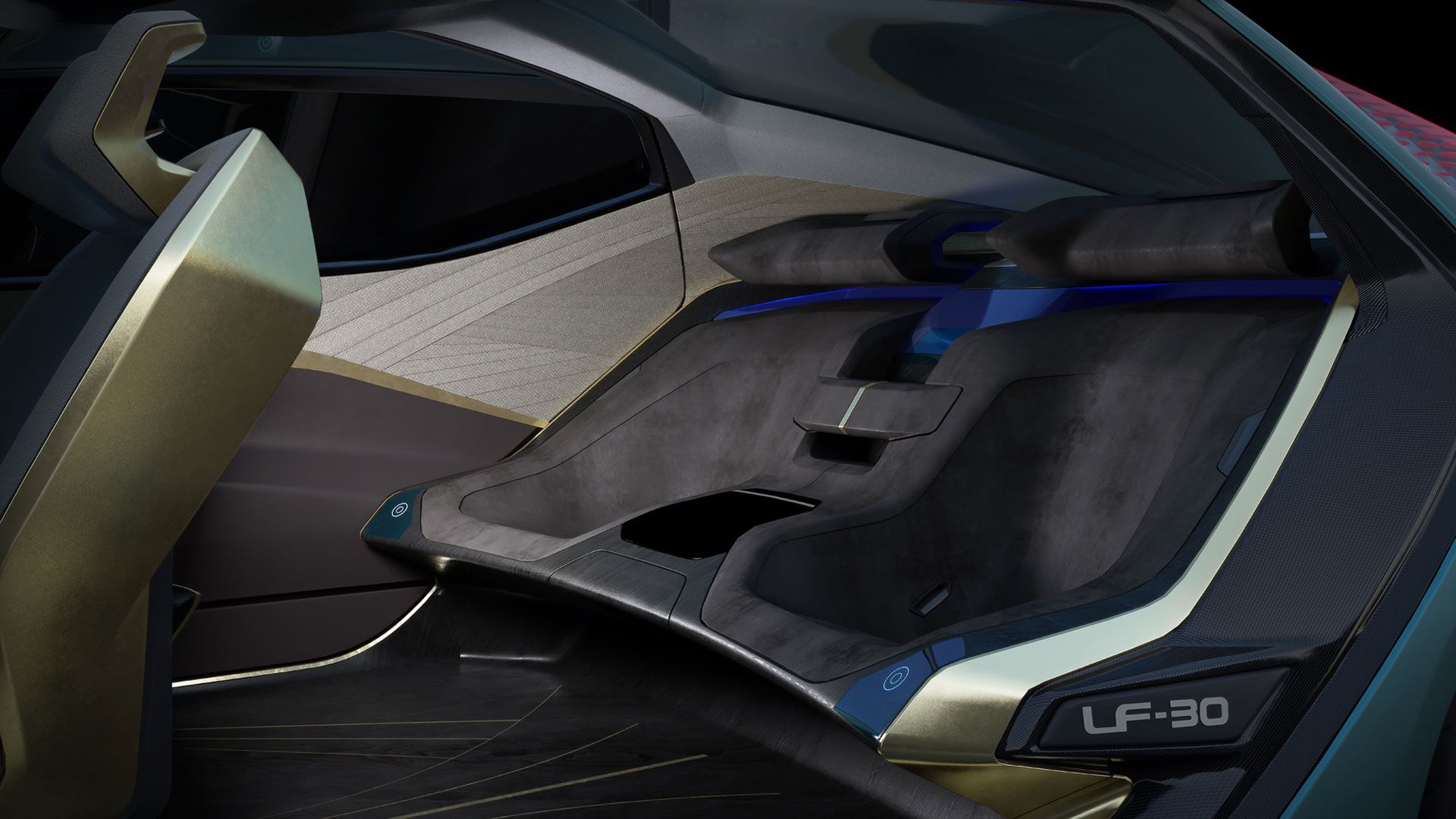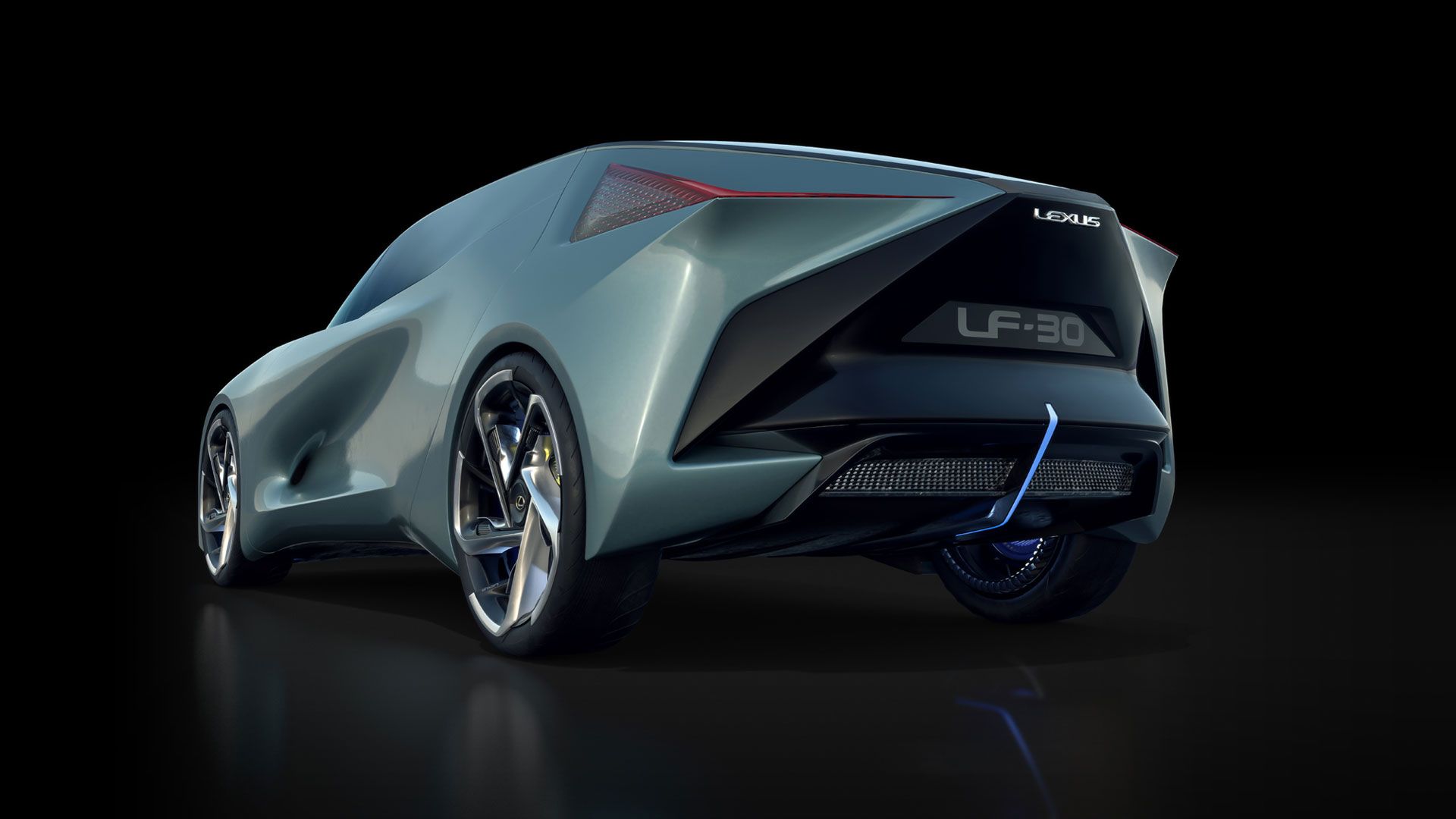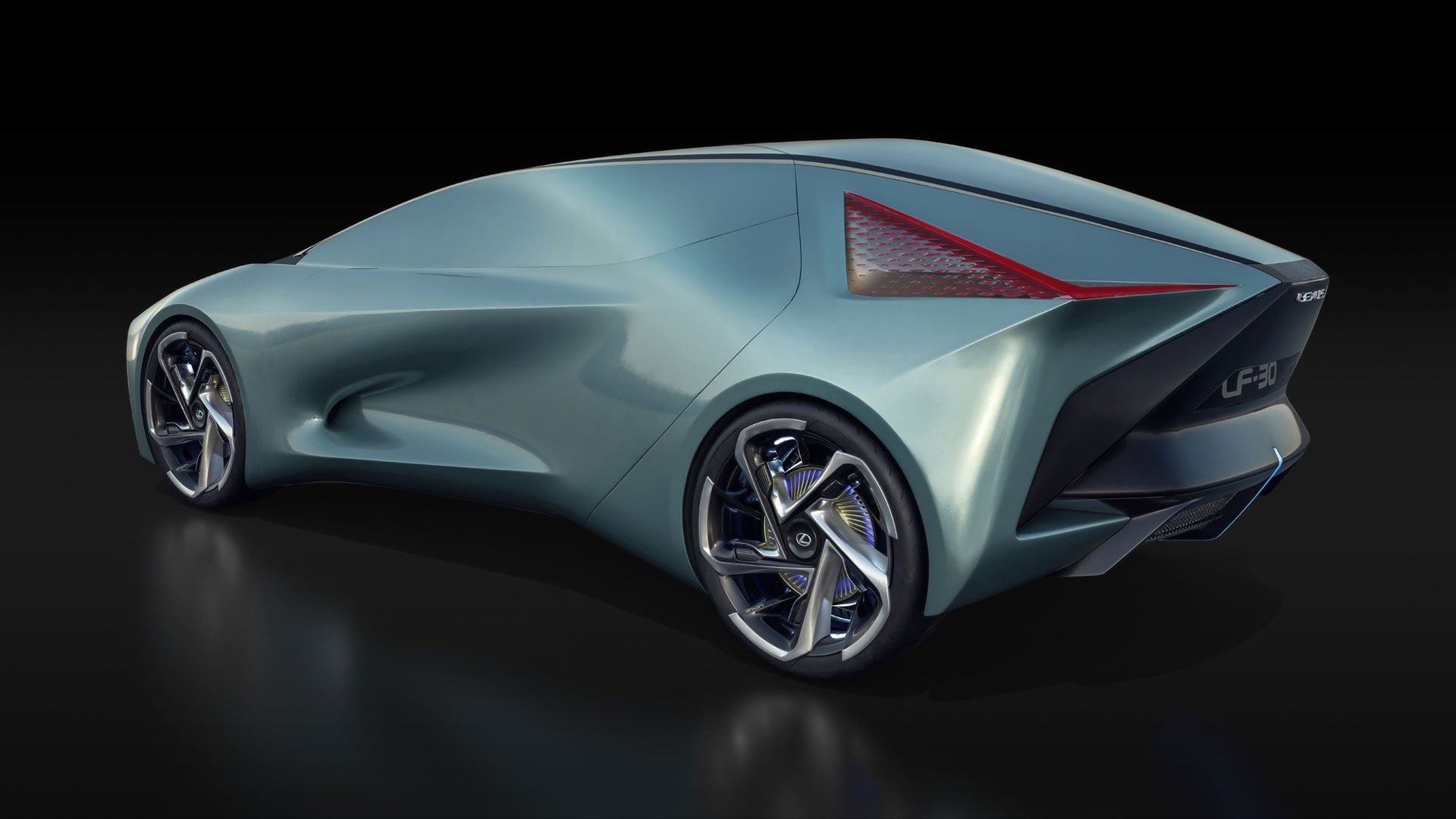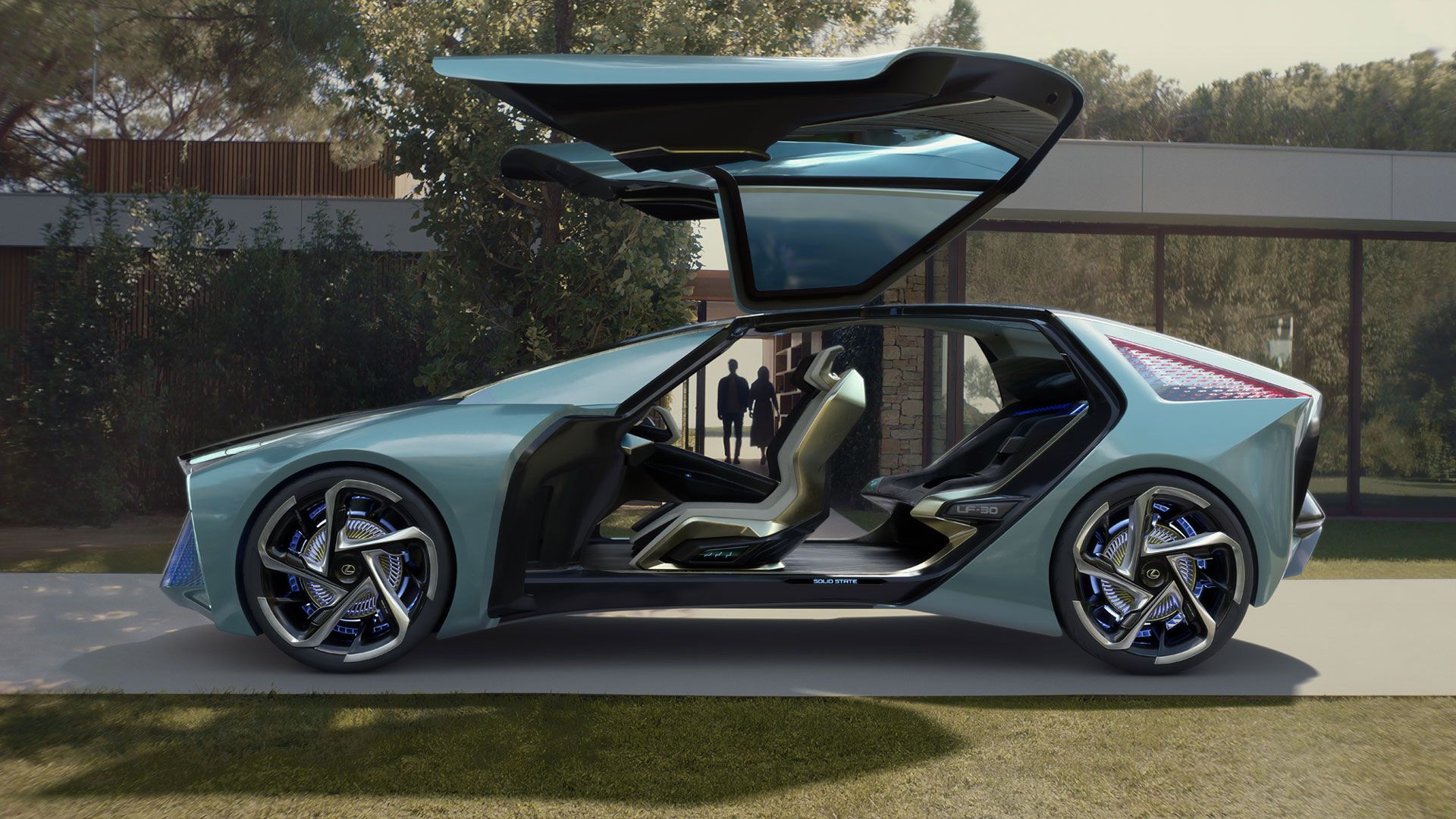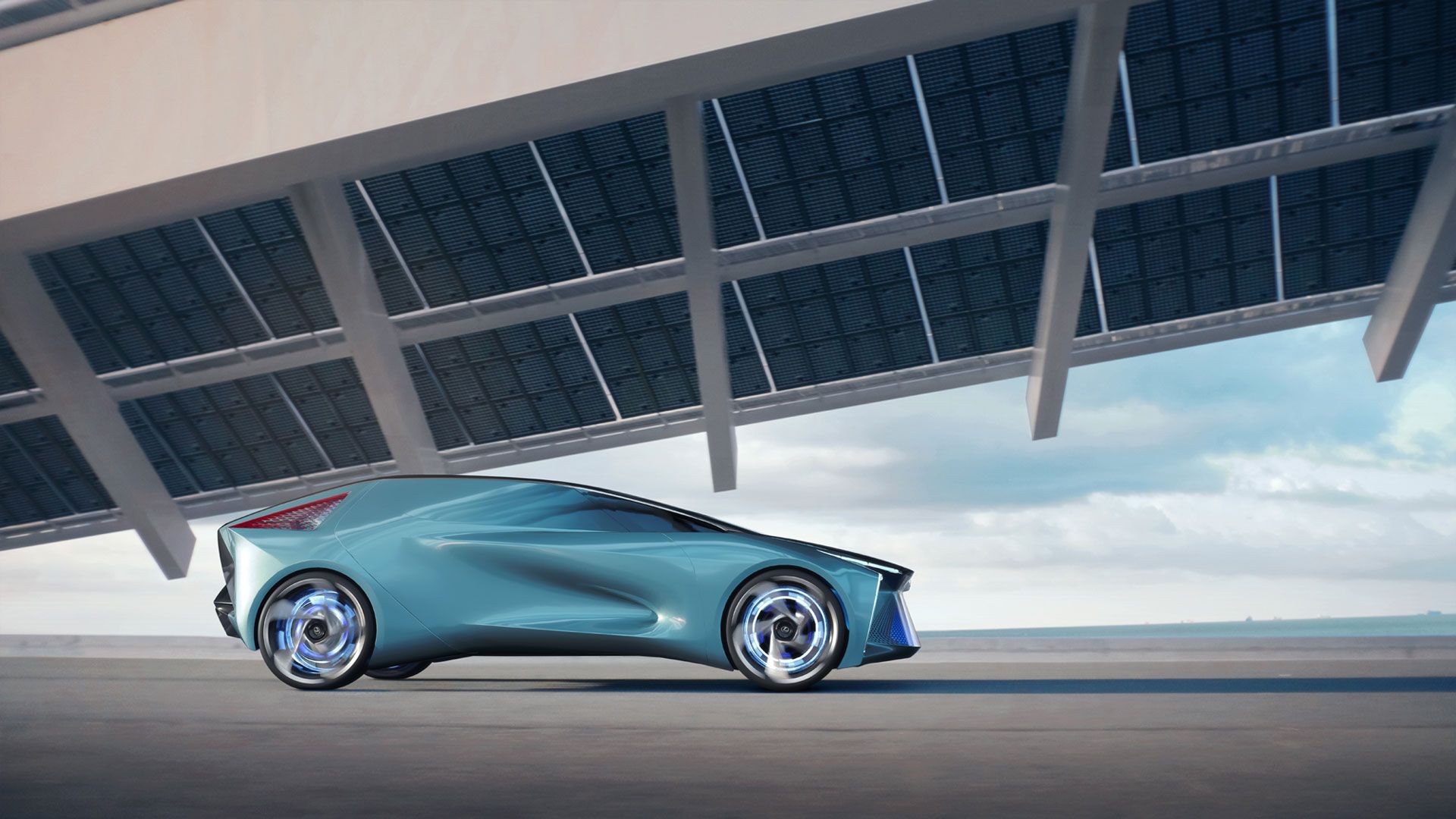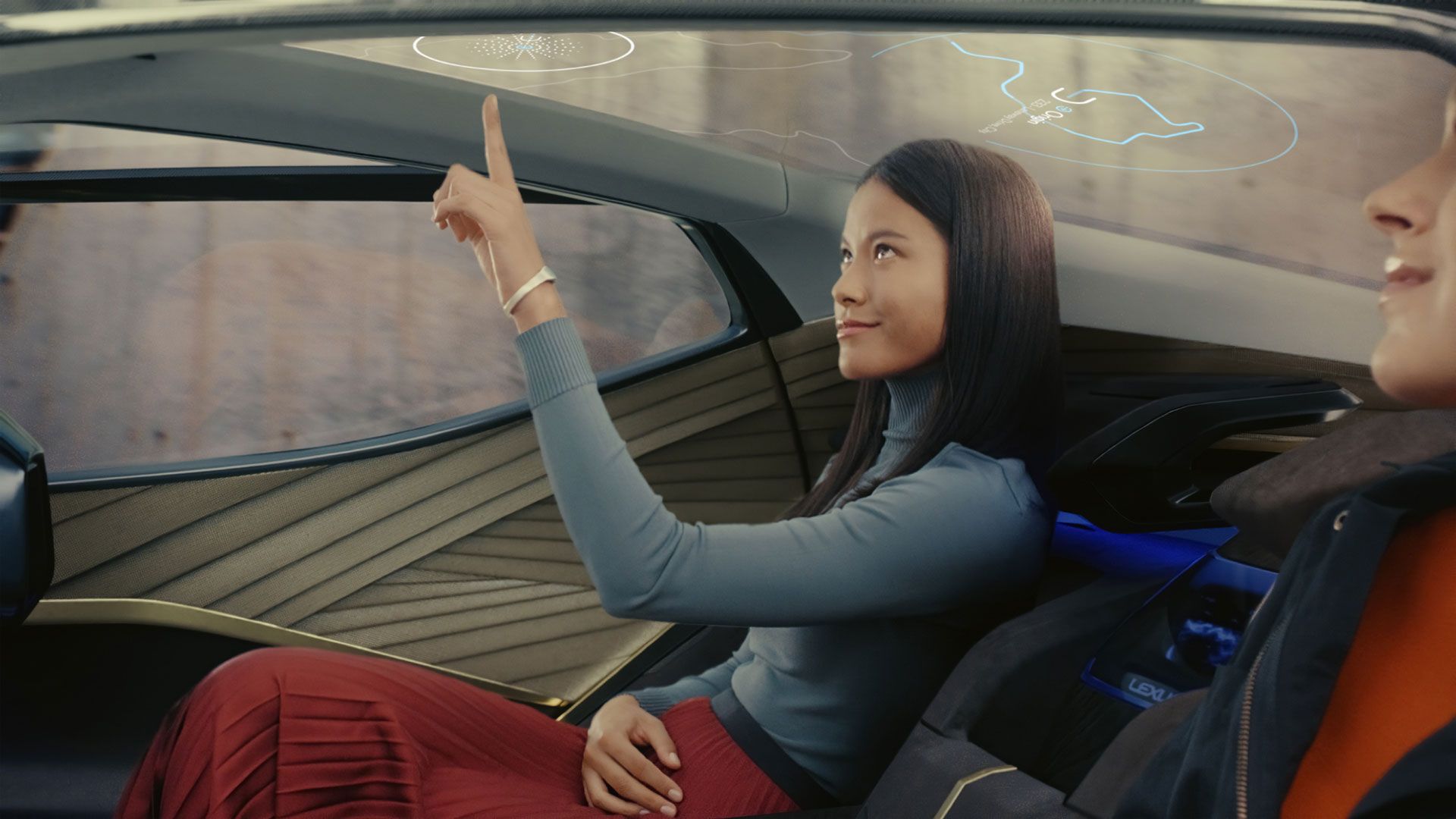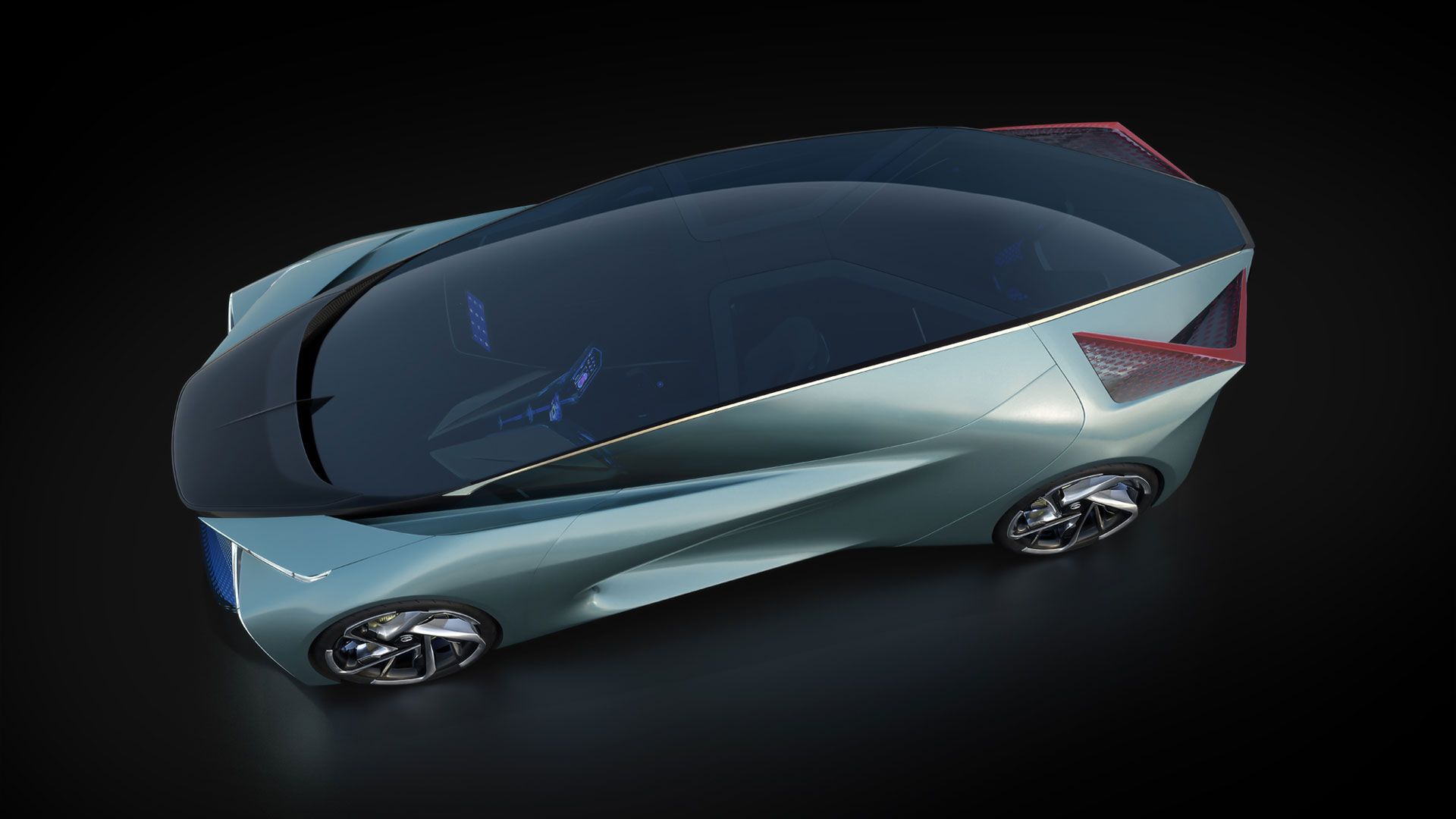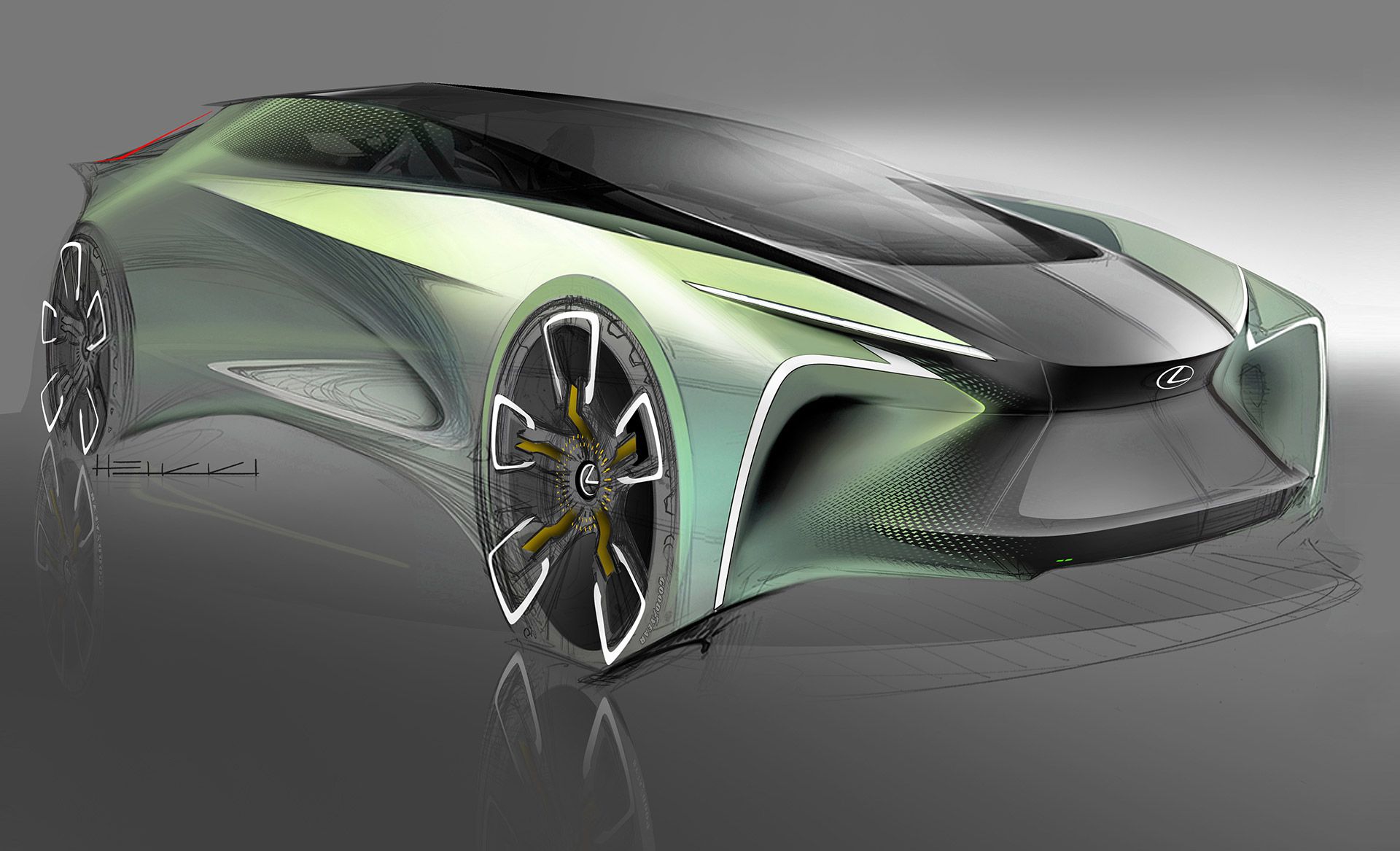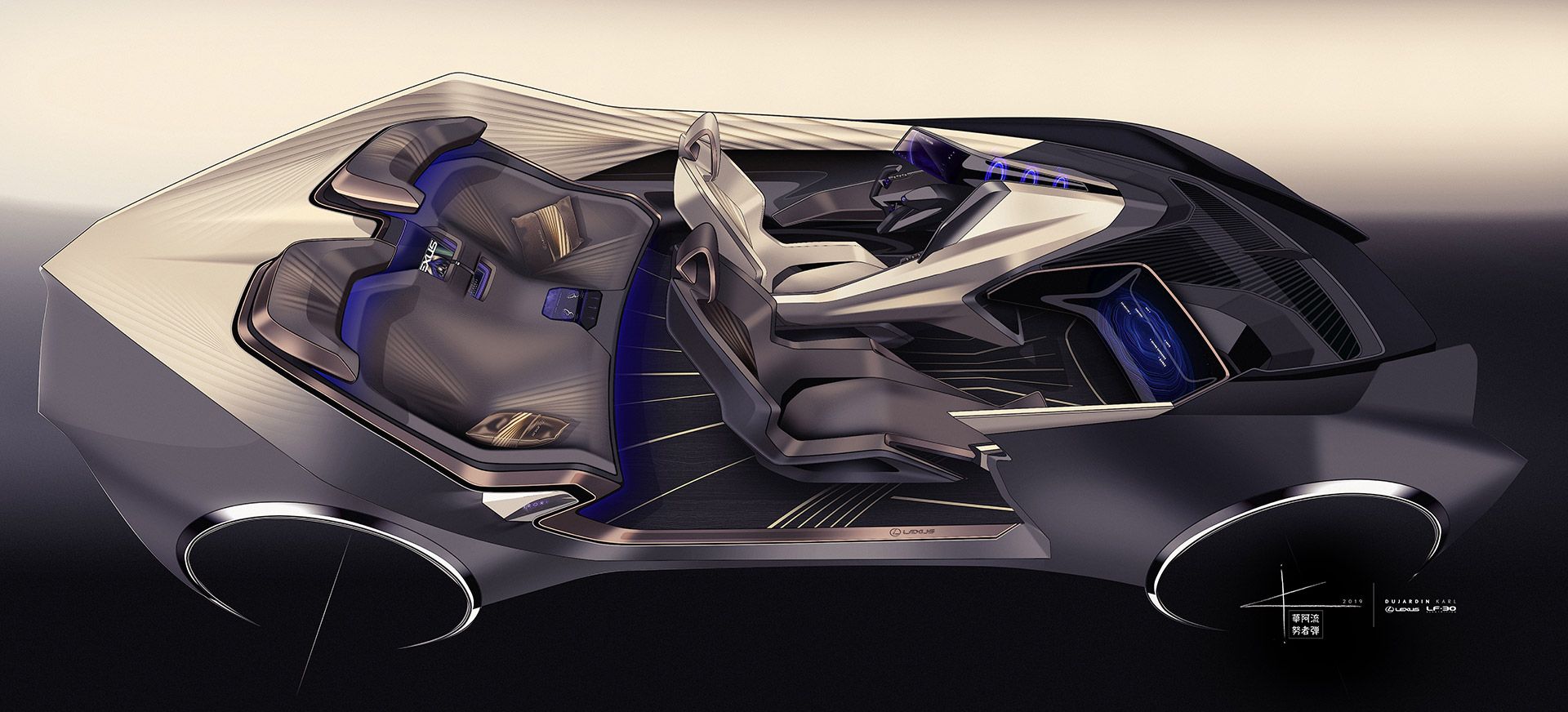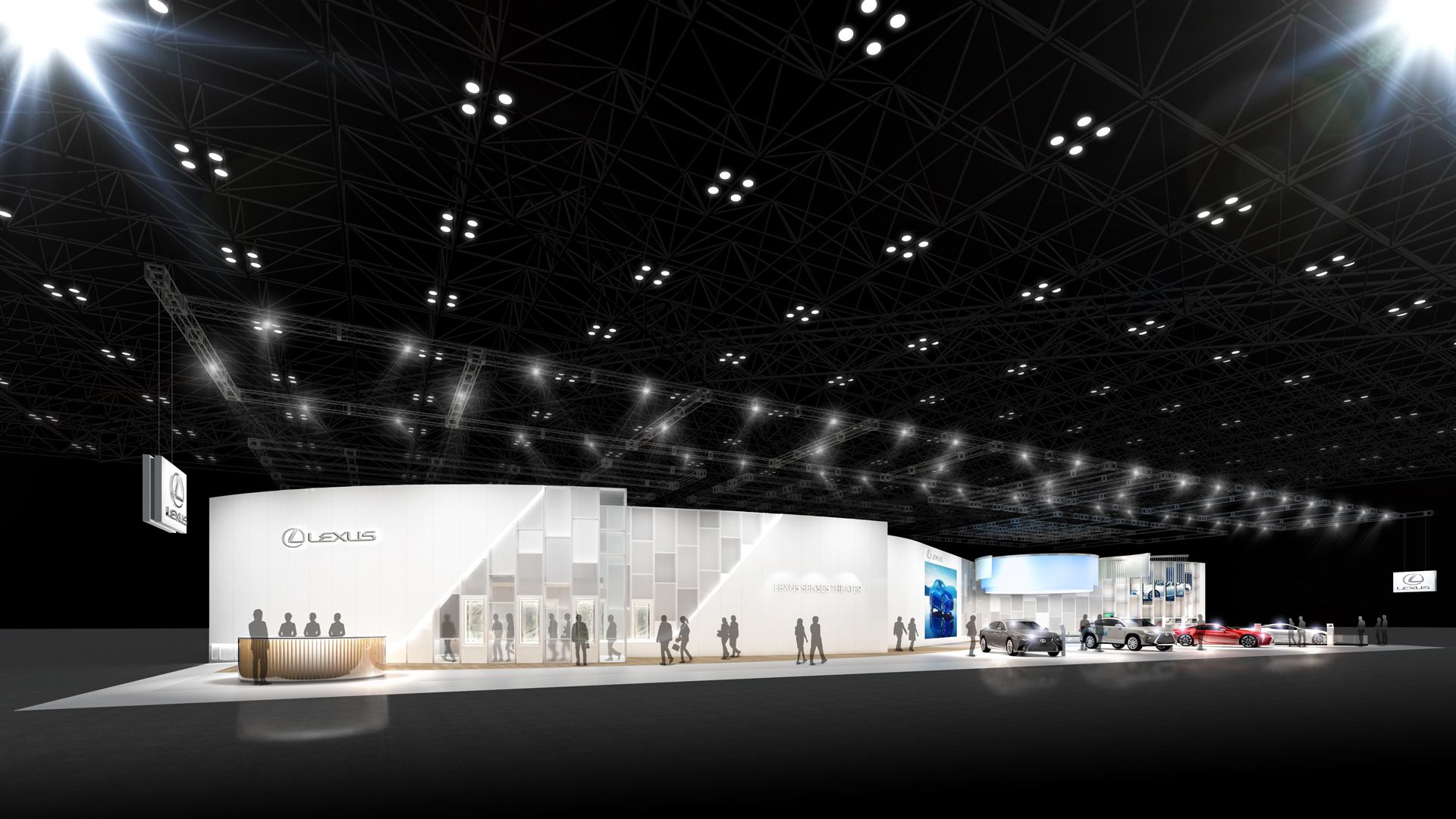Lexus is not fooling around when it comes to electrification and is using Tokyo as a sampling experiment for the stunning LF-30 Electrified prototype. Did we mention stunning? The LF-30 looks otherworldly, has gullwing doors, and uses four in-wheel electric motors, a steer-by-wire-system, and a slew of autonomous driving technologies plus Lexus Advanced Posture Control. Stick around to find out everything you need to know about the Lexus LF-30 Electrified concept shown at the 2019 Tokyo Motor Show.
2019 Lexus LF-30 Electrified Concept
- Make: Array
- Model: 2019 Lexus LF-30 Electrified Concept
- Horsepower: 536
- Torque: 516
- [do not use] Vehicle Model: Array
Lexus LF-30 Electrified Concept Exterior
Sheesh, where do we begin?
In the front, since there’s no need for a conventional hood to cover the traditional engine compartment, Lexus was able to let the creative juices flow, allowing for a drastic evolution - or should we say revolution - of the spindle grille, which now adopts a 3D shape, flanked by gaping air intakes and wing-shaped headlights.
In terms of size, the Lexus LF-30 is 5,090 millimeters long, 1,995 millimeters wide, and 1,600 millimeters tall, with a wheelbase of 3,200 millimeters.
2019 Lexus LF-30 exterior dimensions
|
Length (mm) |
5,090 |
|---|---|
|
Width (mm) |
1,995 |
|
Height (mm) |
1,600 |
|
Wheelbase (mm) |
3,200 |
Lexus LF-30 Electrified Concept Interior
Now, if you thought the exterior of the Lexus LC-30 was spectacular, wait until we tell you more about the cabin. Here, Lexus’ Tazuma concept reigns supreme. In case the name doesn’t ring any bells, well, it’s because this is a new philosophy brought forward by the Japanese carmaker. As a side comparison, you can think of it as the equivalent of Mazda’s Jinba Ittai horse-and-rider unity.
That said, let’s get to the point.
Speaking of the driver, Lexus says that the switches on the steering whe… controller and the head-up display have been “coordinated to a high degree” in such a way that they allow the user to control the navigation and multimedia systems without operating manual switches at all. In addition, the car-human interaction medium is complemented by gesture control and augmented reality-delivered vehicle information and status
Viewed from the side, the two front seats of the LF-30 concept look like a stylized human beings that sit down, with the back slightly tilted backwards. They, too, are inspired by those found on first-class aircrafts. What’s more, the rear seats, says Lexus, are fitted with “artificial muscle technology” which allows them to mold accordingly to their occupant - now that’s something we want to see in a production vehicle in the near future. The rear seats also have reclining, relaxation, and alert functions. Listening to your favorite tune while letting the car do the driving is covered by a Mark Levinson audio setup that also offers noise-cancelling abilities.
Now, let’s discuss materials. For the LF-30 Electrified, Lexus went for materials that are both luxurious and sustainable. On of them is Yakisugi or charred cedar, which was used to decorate the concept’s floor and steering controller. What’s more, the inner door trim is made out of recycled metal that’s been processed into fibers.
Drivetrain
This brings us to what powers the Lexus LF-30 Electrified concept as well as the carmaker’s Advanced Posture Control feature. The battery pack is positioned as low as possible in the vehicle’s floor while each wheel is powered by its own electric motor for better handling of inertia and higher-performance driving.
This is where the Lexus Advanced Posture Control system comes into play. The technology acts as a buffer for the output generated by the e-motors and, in other words, makes the switch to front-wheel drive, rear-wheel drive, or all-wheel drive depending on a given situation.
The good news here is that Lexus will “widely” implement this piece of tech for its upcoming electrified vehicles. What’s more, the LF-30 concept proposes a steer-by-wire setup that steers away (pun intended) from the typical mechanical setup for a more precise response to the driver’s inputs but also to allow the steering controller to slide forward and out of the way when the driver switches to autonomous mode.
Lexus LF-30 specifications
|
Weight (kg) |
2,400 |
|---|---|
|
500 |
|
|
Battery capacity (kWh) |
110 |
|
Charging speed (kW) |
150 |
|
0–100 km/h acceleration (seconds) |
3.8 |
|
Maximum speed (km/h) |
200 |
|
Max. output |
536 HP |
|
Max Torque |
516 LB-FT |
Final Thoughts
Lexus will launch its first BEV in November. In all fairness, it won’t be fitted with the level of high-tech features seen on the LF-30 Electrified concept, but it will surely pave the way for more sci-fi-looking vehicles. Once the model hits the market, Lexus plans to focus on its very own electrified vehicle lineup - a new, dedicated BEV platform is also in the making, as by 2025, the company wants every model it sells to have a pure-electric version.
From here on, the sky’s pretty much the limit for the Japanese carmaker because after seeing the LF-30 prototype, it’s pretty clear how Lexus managed to cover all the bases in regard to its upcoming models. The tech infusion is there, the same can be said about luxury, and we can’t imagine how Lexus would have problems in coming up with all-electric powertrains since it benefits from every drop of know-how Toyota has accumulated over the past decade. Call us too excited, but we can’t wait to see what Lexus has to offer to the EV world of tomorrow.

